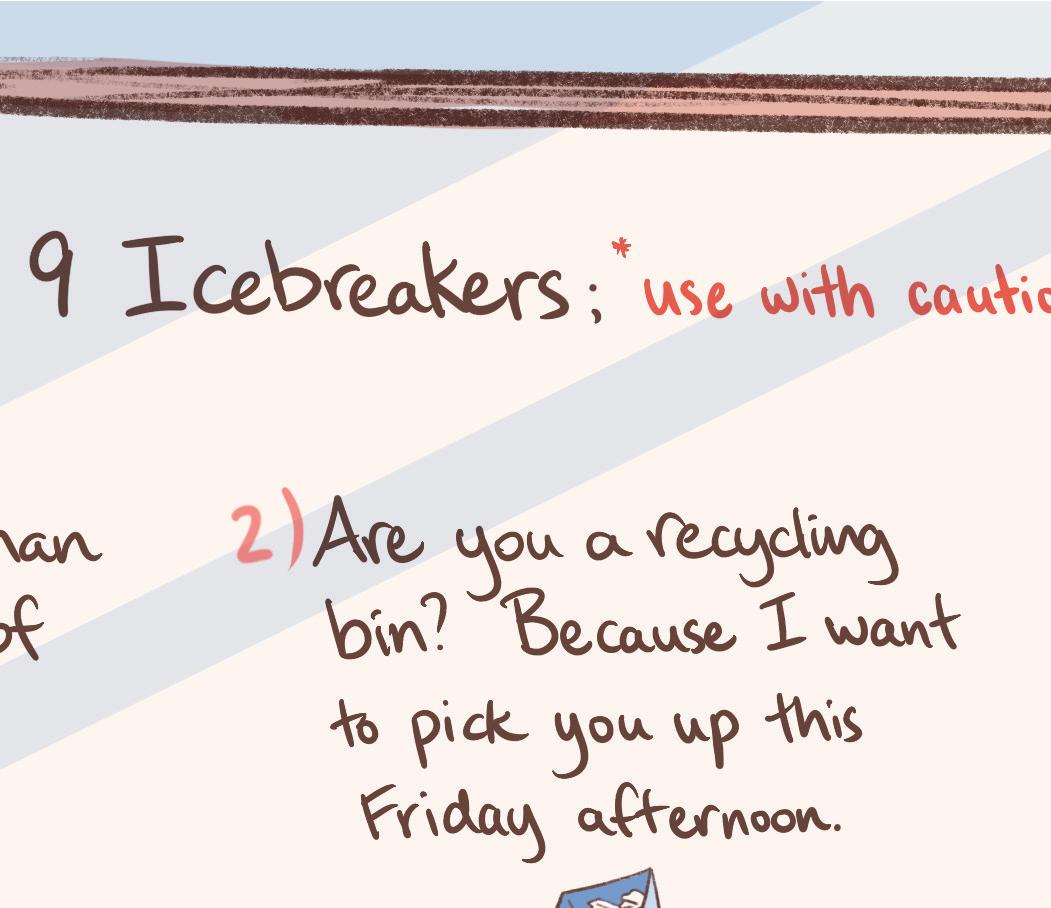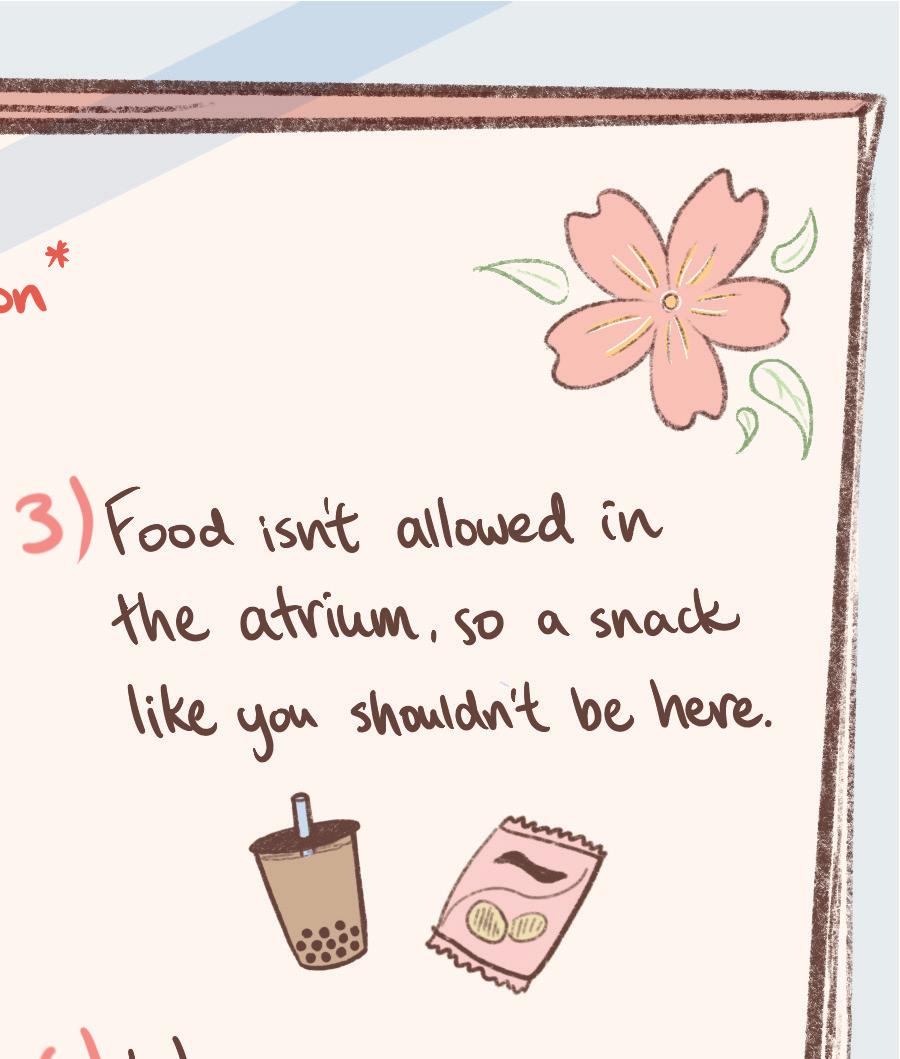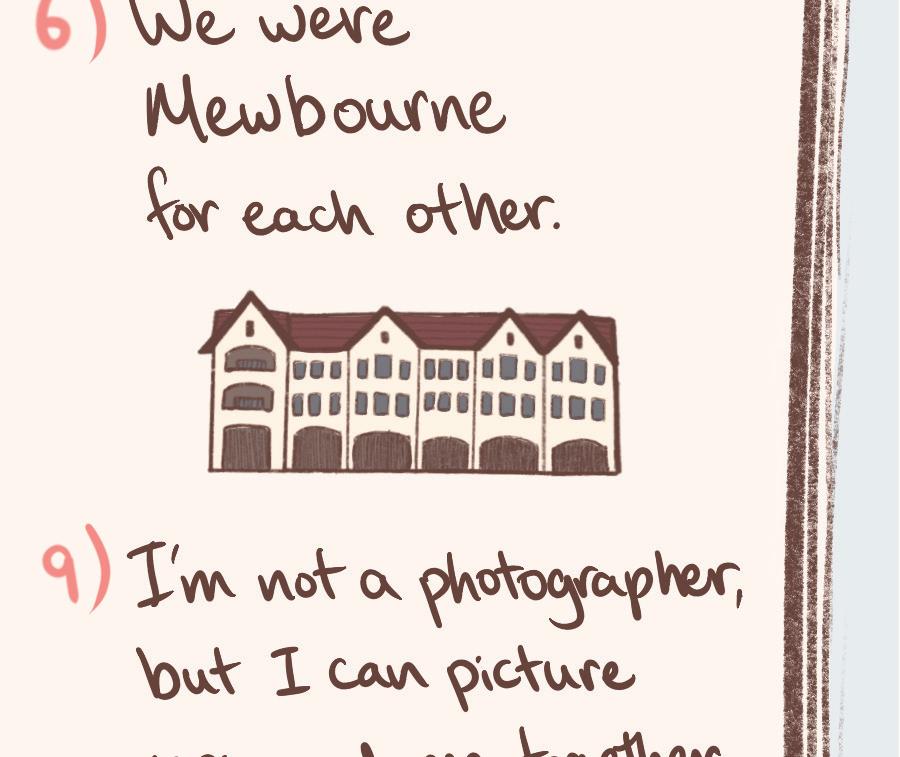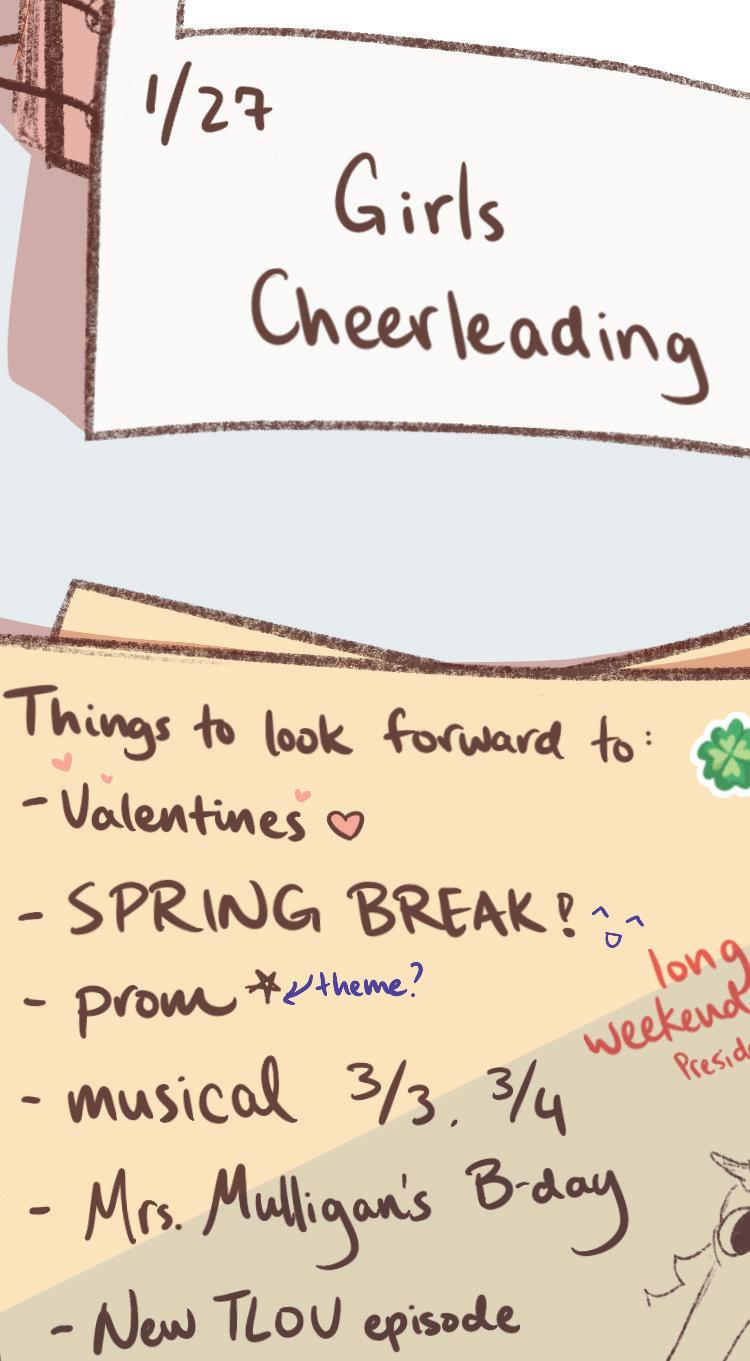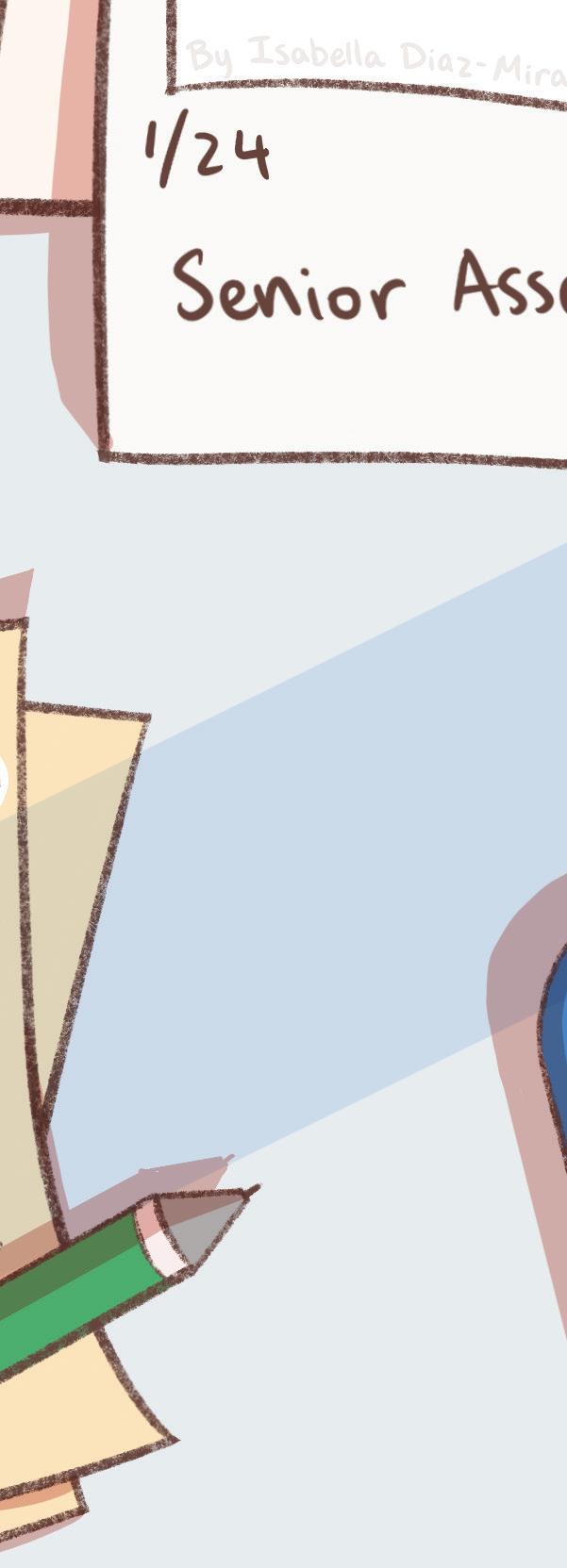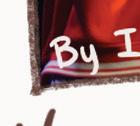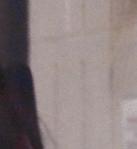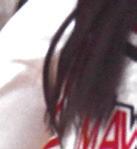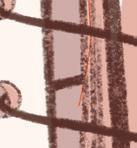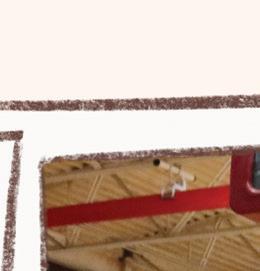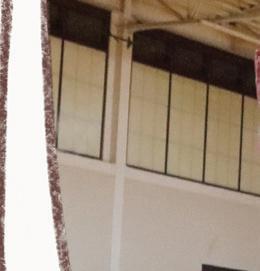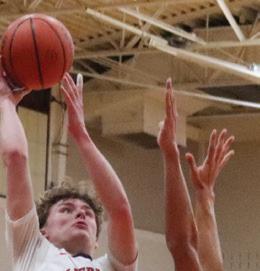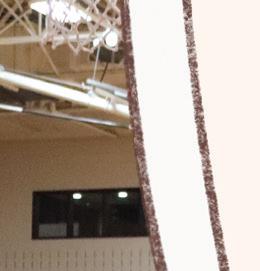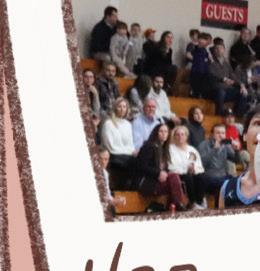




















































































































































































































































































After almost three years of enforcing its strict zero-Covid policy, China nally relaxed its restrictions in November following nationwide protests. Just two weeks later, 10 of freshman David Qian’s relatives in China contracted Covid.

Instead of freeing the population from the Covid lockdown, the government’s new policy unleashed chaos as cases spiked.
Peking University reported in December that there were more than 900 million total infections — almost two-thirds of the population.
Covid is so contagious that Qian suspects his grandparents caught the virus by taking out the trash.
“The air around them was completely infected,” Qian theorized. “Just breathing got them sick.”
From the start of the pandemic, the Chinese government had one goal: prevent infections at all costs. They minimized the case count with mass testing, frequent quarantines and stringent lockdowns.
Citizens and tourists alike were required to install digital tracking apps that showed their recent Covid test results, and before entering any public indoor space, authorities scanned a QR code to check for possible contact with infected persons.
Further complicating the situation, government o cials have refused Western medicine since using vaccines from other countries would show weakness and potentially expose China’s economic stagnation after three years of Covid. Instead, Chinese scientists scrambled to develop their own vaccine. While the rest of the world has moved on in part due to mass vaccinations, China has been mired by inaction.
Despite campaigns launched in late November to vaccinate the elderly, many were worried about potential side e ects.
According to the National Health Commision, only two-thirds over the age of 60 had been vaccinated as of Dec. 26.
Junior Audrey Liu attributes the rise in Covid cases to the increasing elderly population in China, even though masking, social distancing and other Covid precautions have become the norm.
Many hastily bought fever medicines and painkillers to relieve symptoms, leading to drug shortages and empty pharmacy shelves — closely mirroring the panic-buying that gripped the US back in 2020.
The result: patients on gurneys crammed into overcrowded hospital corridors with relatives unable to see their loved ones. According to CNN, satellite images captured newly constructed parking lots outside funeral homes. A recent Reuters video showed lines of people with caskets waiting outside a crematorium for hours.
The World Health Organization said that China has been “heavily underreporting” the number of Covid deaths since it relaxed restrictions. The Chinese National Health Commission reported nearly 80,000 deaths from Covid since abandoning its zero-Covid policy — a stark contrast to the estimated 600,000 deaths, according to Air nity, an infectious disease analysis platform.
Over the course of 2 months, China went from a zeroCovid policy to relaxing all restrictions.
claimed a much higher toll. The tragedy sparked protests throughout the region as people demanded greater accountability from the government.
crowd shots — but the damage was done.
St. John’s parent Julia Lu recently returned from a visit to China. Under the previous policy, no one at her uncle’s nursing home succumbed to Covid, but after restrictions were lifted an average of 10 people died each day.
Depending on the city, visitors in China had to quarantine for anywhere from 10 to 21 days. During her stay, Lu was not allowed to leave her hotel room. Guards in hazmat suits delivered meals.
“From the moment you land, they made you stay in a hotel all by yourself for three weeks," Audrey Liu said. “Even if your visit is only scheduled for two weeks."
Anyone in contact with an infected person was placed in complete isolation at a government quarantine facility.
On Nov. 24, a re broke out in an apartment building in the city of Urumqi.
The Chinese government had previously ordered the doors welded shut for an ongoing 100-day lockdown, preventing the residents from leaving — or rescue services from entering. Xinhua, a state-run news agency, reported just 10 deaths and nine injuries. According to CNN, local residents
Freshman Carson Wang’s immediate family reported groups of protesters raising blank sheets of paper proudly above their heads to represent “everything they want to say, but cannot.”
“People are getting arrested just for holding up blank pieces of paper," Wang said.
“It’s insane.”
The tensions within China bear an eerie similarity to the 1989 Tiananmen Square massacre, in which the Communist government attacked student demonstrators.
“History was repeating itself,” Wang said.
Wang’s uncle complained to his western friends about dull, apprehensive life under the government’s strict regulations through WeChat, China’s most popular messaging app. Thirty minutes later, his WeChat account was banned.
During the 2022 World Cup, China could no longer hide what was happening in the outside world. Televised soccer matches in Qatar blew up on social media, but it was not the action on the pitch that caught their attention. Instead, the innocuous crowd shots revealed thousands of people — in a historically restrictive Middle Eastern country — maskless and packed together.
After a few games, China’s state-run television station delayed World Cup broadcasts by 30 seconds in order to edit out
Adriana Torres Li Ning spent the Thanksgiving break in Lima, Peru, where her parents once lived. In the three weeks before she returned for Winter Break, the Peruvian government survived a coup, impeached the president, and declared a national state of emergency.
The unrest began on Dec. 7, when former president Pedro Castillo established an emergency military government to get rid of Congress.
“One ne day not that long ago he said, ‘What if I dissolve the Congress?’” Torres Li Ning said. “But that’s a coup.” Congress promptly voted him out of o ce.
Vice President Dina Boluarte took o ce later that day, sparking protests so widespread that she declared a state of emergency. Although Castillo had only a 20% approval rating in July, some protesters still demand that he be reinstated as president.
“I love my fellow Peruvians,” Torres Li Ning said. “Every time there is a new president, they start rioting.”
Castillo was arrested only a few days before Torres Li Ning’s ight to Lima, which her family considered canceling after a group of protesters seized the Arequipa airport.
Torres Li Ning’s father told her to be “ready to run” if something happened once they landed. “There were soldiers walking around with assault ri es,” she said.
Freshman Ellie Rosenblatt’s family had planned to visit the Galapagos Islands and Peru over Winter Break, but they canceled the Peruvian part of the trip after a family friend got stuck in Machu Picchu due to road closures.
“There was a lot of rioting,” Rosenblatt said, “and my parents didn’t want to put us through that.”
On Jan. 9, a month after the attempted coup, police in Juliaca fatally shot a man while he was walking home past a demonstration near the airport. Protesters responded by attempting to seize Juliaca Airport, and the military opened re into the crowd, killing 18 — including a doctor tending to the injured and a teenage girl on her way to buy food. The governor of the Puno region blamed President Boluarte for the incident.
At least 48 civilians have died, many at the hands of police.
Sophomore Benji Adachi, whose parents emigrated from Peru in the ’90s, has seen Peru’s democracy struggle, but the current protests are far worse than anything he has witnessed: “People are still on the streets, throwing bombs.”
Over two months after the attempted coup, the protests — and violent government response — show no signs of stopping.
On Jan. 21, police arrested 200 protesters on a Lima university campus. The next day, the government closed Machu Picchu, trapping 417 visitors in a nearby town.

When Torres Li Ning's father visited his hometown of Arequipa, he had to abide by a 6 p.m. curfew. But most protests occurred in the south, so Torres Li Ning did not see any violence in Lima. She says that Peru is used to chaos: the country has had ve presidents since 2020.
“You know how in the U.S., it’s [usually] a peaceful transfer of power? Sometimes that doesn’t work as well for Latin America,” she said.
Protesters have called for immediate congressional and presidential elections; Congress had even lower approval rates than Castillo, and many rural Peruvians, disillusioned with the economic elite, still support the Marxist-Leninist Castillo.
“Anyone can block a highway,” Adachi said. “They want to show a sign that they really want change, so they storm an airport.”
Torres Li Ning said that many protesters are members of the Peruvian communist group Sendero Luminoso — The Shining Path — which terrorized the Peruvian countryside in the 1980s and ’90s. The Valley of the Apurímac, Ene and Mantaro Rivers is a hotbed of terrorism, cocaine production and pro-Castillo protests. Socialist paramilitaries support Castillo over the compara-
“The Chinese citizens were demanding the humble desire to live and to let live from their government,” said Chinese teacher Summer Pao, who attributes the sudden surge for freedom to the rise of social media, virtual private networks and a song.
In November 2021, Net ix released the hit show “Arcane,” which centers around the con ict between the wealthy aristocrats of Piltover and the exploited lower class in its undercity. When the show was translated into Chinese, Hong Kong pop star Eason Chan released the single “Warrior in the Darkness,” which tells the story of Arcane’s con ict. After striking a chord with long-oppressed citizens, it became an anthem of the protest movement.
“Everyone is singing this song, from kindergarteners to grandparents,” Pao said. “It helps them realize that their self-worth is more than what the government decides.”
While Chinese citizens experienced recent hardships, Covid restrictions were eased just in time for Lunar New Year.
According to NPR, many people could nally return to their hometowns to reunite with family without worrying about quarantine and lockdown.
As the new year begins, the Chinese government nds itself working to revive its economy, restore the image of its leadership and make sure it does not fail its people again.
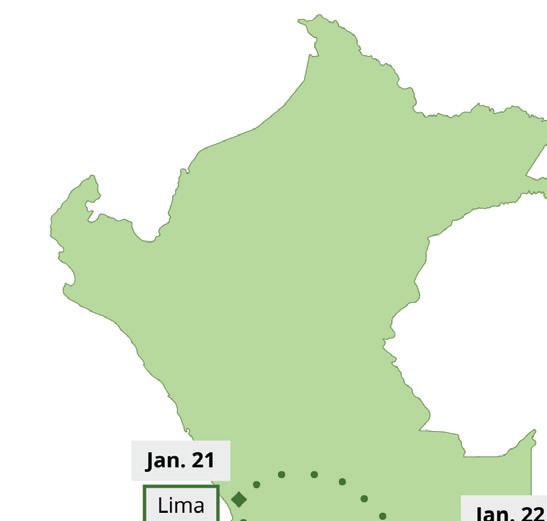
tively right-wing Boluarte.
“Normal protesters don’t seize airports. This was a planned-out, strategic attack,” Torres Li Ning said. “That’s what di erentiates it from angry civilians being mad about the president.”

Adachi, though, distinguishes the protests from terrorism that plagued Peru in the ’90s: “People call what is going on right now terrorism. But this is protest taken to a higher level.”

The country is still under a state of emergency, but
Adachi said that the movement is too disorganized to threaten the democratic process.
“There is always instability in Peru," Adachi said.
“Usually, it takes a few months and it passes.”
Bill McDonald was feeling justifiably proud after his Chapel speech.
At the Sept. 29 service, he had shared anecdotes about his health issues from early 2020, when he contracted an unknown virus that caused cardiomyopathy and early stages of heart failure. After an intervention by the School and his family, he sought the necessary treatment and focused on self-care during the pandemic.
The speech was full of McDonald’s trademark “energy, zest for life and sense of humor” said science teacher Kelly White. “It was a typical Bill McDonald Chapel experience.” McDonald reveled in the applause, fist-bumping and high-fiving colleagues as he crossed through the double doors to the vestibule at the back of St. John the Divine.
Because his heart medication frequently causes dizzy spells, he was not overly concerned when he began experiencing lightheadedness.
“I felt like I'd done a really good job,” McDonald said. “I was full of hubris.”
Then he collapsed.
Middle School Dean Robert Pringle and White were among the first to render aid. As Pringle checked McDonald’s breathing, White administered CPR. Then SJS parent Chantal Van Riet (‘91) began performing rescue breathing. Under Pringle’s instruction, Chris Curran, Associate Head of School, called Director of Clinical Services Colleen Kimball while Head of Middle School Chia-Chee Chiu called 911.
Kimball, who was in the US clinic, quickly gathered supplies and was in the Chapel with campus ambassador Alex Echegoyen 59 seconds after the call.
with a fire truck and engine crew. For emergency calls that come in as cardiac arrests, the closest available fire truck and ambulance from HFD are dispatched to the scene, as well as an HFD Emergency Medical Services supervisor. Before McDonald was taken away by paramedics, he requested a moment alone. Kimball cleared away all other attendants and paramedics.
“I realized that something bad had really happened,” McDonald said. “I understood it was a big thing. I knew it was going to change my life.”
Fine Arts Administrative Assistant Jerri Franke wanted to get McDonald’s attention before he was taken away. From the stretcher, McDonald told her to take care of Costume Associate Scott Alan, his spouse.
McDonald was taken by an HFD ambulance to Houston Methodist hospital.
Afterwards, Franke sought out Alan to explain what had happened. Although concerned, he trusted the care McDonald would receive.
According to Kimball, who rode to the hospital with McDonald, paramedics said he was one of the rare heart attack patients who was cognizant and reactive in the ambulance. For Kimball, the most impactful moment was seeing faculty and “non-medical people” provide proper aid.
Meanwhile, Pringle and the other staff ushered middle schoolers out of the Chapel without causing them too much concern.
On the first day in the hospital, Franke and Alan stayed with McDonald to ensure that they had “a second pair of ears.”
“I couldn't leave either of them by themselves,” Franke said. “ It was just something you'd do for your good friend.”
McDonald remained in the hospital for six days. Doctors wanted to monitor him while they prepared for surgery, but the long hours in his room were exasperating. He persuaded his heart surgeons to discharge him early so he could relax at home and recuperate before surgery.
“He worked really hard to get back here,” Alan said. “He wanted to get back to school. He wanted to get back to his normal life.”
Franke felt the “absence of laughter” in their office when McDonald was gone, so she was more than ready to welcome him back.
“His spirit was just reassuring,” Franke said. “His presence made a difference for all of us.”
How do you thank somebody for that? How do you thank somebody for bringing you back to life?
BILL MCDONALDHe now takes time every day to appreciate the little things. He still comes to work every day because he would rather spend his days in a building filled with art than in bed. Every Monday, he brings a vase of flowers to sit in his and Franke’s office.
“This is going to sound really stupid,” he confessed. “I missed walking down the hallway and hearing kids' voices. I missed the noise, the color, the movement of this building. Sitting at home, staring at the ceiling, trying to cope with daytime TV — it was making me crazy.”
McDonald has pieced together what happened during his coronary and sought out those who came to his aid, bearing flowers and cookies to show his appreciation.
“How do you thank somebody for that?” McDonald replied tearfully. “How do you thank somebody for bringing you back to life?”
With Kimball and the ambassadors on the way, Pringle ripped open McDonald’s dress shirt and used his pocket knife to cut open McDonald’s undershirt and necktie, preparing him for the defibrillator, then resumed CPR.
“The only thought in my brain was saving his life,” Pringle said. “I needed to make sure that he didn't pass away on that floor.”
A week earlier, Fire Safety Coordinator Rick Still, Echegoyen and his fellow Emergency Medical Technician ambassadors Steven Bazaldua and Jamon Wilson led a training session for Middle School faculty about how to operate AEDs and perform CPR.
Once the ambassadors arrived on-scene, they administered CPR while Kimball used a resuscitator to help him breathe.
MS English Team Lead Michael Seckman procured the AED and handed it off to MS Assistant Head of School Kelly Blocker because his hands were shaking and he could not handle the device properly. Seckman then turned his attention to students coming down from the balcony in order to “shield them from the scene.”
Pringle powered on the AED, which gave auditive instructions that directed him through the process and told him when to administer CPR and stand clear.
Chiu and Pringle set up the AED pads and administered a shock of 3,000 volts. One shock was all it took to restart McDonald’s heart.
He had been without a pulse for 90 seconds.
According to Still, the chances for surviving a cardiac arrest are about 70% if an AED is used within the first three minutes, decreasing about 7% every minute after.
After one blast from the electrodes, McDonald regained consciousness.
Houston Fire Department personnel arrived at the church
A week later, McDonald underwent quintuple bypass surgery to restore the cardiac blood flow.
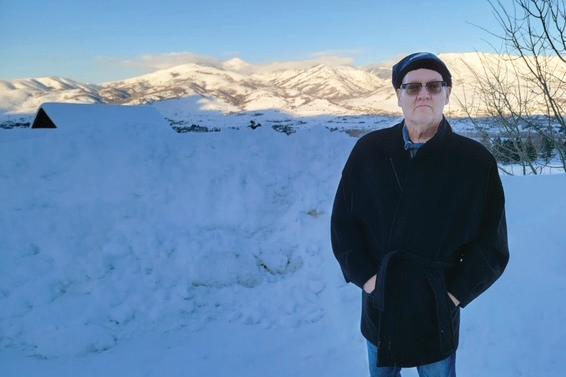
During the nine-hour surgery, doctors harvested arteries from his leg and transplanted them to his heart. His initial infraction rate, which measures how well the heart pumps blood, was around 23 percent. After surgery, it was 55 percent – well within the normal range.
Franke waited 12 hours before McDonald came out of surgery. When the surgeon came to give them an update, he was smiling.
A scar now runs down the length of McDonald’s chest, a constant reminder of his brush with death.
During his recovery, McDonald received over 300 cards from students and adults wishing him a speedy recovery. Community members have provided meals for his family since October.
Moving forward, Kimball wants to train all faculty in CPR. She has already sent out information to all staff on how to perform everyday CPR, as well as how to respond to emergencies. Her team starts with basics, like calling 911 and compressions, but will eventually train all adults on campus.
Because response time correlates to chances of survival, Still emphasizes the necessity for accessible medical professionals and equipment. Currently, there are 14 AEDs on campus, distributed so they are within reach for emergencies.
The campus ambassadors ensure potentially life-saving care can be provided before emergency responders arrive on campus.
“Having quick access to life-saving equipment and having quick access to highly trained and experienced medical personnel makes this campus the most prepared school for any medical emergency,” said Still via email.
McDonald’s outlook has become more focused on appreciating parts of his life he took for granted.
“I live in a building where people are singing, making music, drawing, dancing,” McDonald said. “What a great way to spend your day.”
Lately, McDonald likes to stop and take in the world around him. He occasionally pauses in the middle of the Great Lawn to let the sun wash over his face, his eyes closed.
For the first three weeks after surgery, McDonald spent most of his time sitting in bed and trying not to vomit. But every day, he tried to incorporate a little bit of exercise into his routine. With Alan’s help, he took daily walks and strictly abided by the doctor’s diets.
McDonald returned to campus for two hours starting on Nov. 28, gradually increasing his endurance until he could come in for eight hours a day starting in January. McDonald no longer works 14 hours a day, another way he is practicing self-care.
When he walks down the halls of the Fine Arts building, he savors sights and sounds that help him acknowledge the importance of time.
“I'm just stopping and trying to collect moments while I have them,” he said. “Life is very finite, so I want to enjoy it while I have it.”
In these moments of reflection, McDonald understands that he has been given the opportunity to depart on his own terms.
“I know I'm going to have to give it up one day,” he said, “but I want to be able to say goodbye to it.”
'I knew it was going to change my life.'Lauren
Baker
Eshna DasAfter suffering a near-fatal heart attack in September, Bill McDonald is on the mend. He recently traveled to Utah for a meeting. PHOTO | Anthony Leakey The only thought in my brain was saving his life. I needed to make sure he didn't pass away on that floor.
BILL MCDONALD






When researching ChatGPT, we went straight to the source and asked ChatGPT to write an article for a high school newspaper about itself. This is what we got:
“Have you ever wished you had a smart, witty and knowledgeable friend to talk to at any time of the day? Well, your wish might have just have been granted! Meet ChatGPT, the OpenAI language model that’s taking the world by storm.” ChatGPT wrote this paragraph in under ve seconds, and it’s terrible.
It starts with a question lede, which is amateur at best. And an exclamation mark? Strictly forbidden. But even though the ending is editorializing, it’s not wrong.
“It happened super fast. It’s hard to regroup at a time that’s not summer,” Guinn said. “I’m worried we’re going to be behind.”
Students currently use the chatbot for assignments in almost every subject area, con rming many teachers’ fears.
Harvey, an Upper School student, says members of his science class used the chatbot for major projects. “People used it to do the entire midterm — they just plugged it into ChatGPT, and it produced the answers.”
According to Head of School Dan Alig, students representing chatbots like ChatGPT’s outputs as their own work violates the Honor Code.
“We still expect deep engagement when it comes to writing and reading, and we still expect kids’ work to be their own,” Alig said. “We’ll be looking for ways to ensure the kids are authentic and honorable.”
Director of Curriculum Dwight Raulston says the School has to do more than just alter the Honor Code. AI is here to stay, he explains, and St. John’s needs to adapt.
“All they’re going to do is evolve and get more sophisticated,” Raulston said. “Sticking your head in the sand and pretending they don’t exist does not seem to me to be either an intelligent or a productive answer.”
One analogy Guinn uses is that ChatGPT is like a calculator: once the devices became more accessible to students in the 1970s, schools had a similar reaction. Educators soon realized that if their homework could be solved by a pocket-sized device, the curriculum needed to change.
“We need to rethink not only how we assign papers, but also how we assess them,” Guinn said. “So we can make rules about it, and we can block the site, but we need to make it not tempting for students to use.”
“It’s mainly focusing on creating a neural network that’s simulating the same neural pathways that you would have in your own brain,” Engineering teacher Matt Bounds said.
One of the primary issues with using chatbots for papers and projects is that they often pull information from untrustworthy or faulty sources. While OpenAI has made e orts to prevent ChatGPT from including o ensive or false content in its responses, the model still struggles with accuracy.
ChatGPT also cannot respond to prompts relating to current events. The dataset it draws from is limited to anything published before 2021, so if a user was to ask it about the war in Ukraine, it would spew out information about the Russo-Ukrainian con ict from 2014.
Programmers and educators have begun using ChatGPT’s limitations to their advantage. While incorrect information and citations are often easy for educators to spot, coders have begun programming models that determine whether text was AI-generated. “GPTZero,” a website created by Princeton student Edward Tian, has gone viral.
Despite its threat to the establishment, Guinn says AI could have a positive impact on education — he even mentioned the possibility of ChatGPT being used in class.
“We have to articulate what the line is between stealing and taking building blocks from something and using it to build something new,” Guinn said. “We have to gure out how it’s a tool, but not a replacement.”
The chatbot was released on Nov. 30 by research lab OpenAI. ChatGPT was coded to interact with users in a way that mimics human conversation, but it can be used for a multitude of purposes, including writing poetry, computer coding and solving equations.
It has garnered international attention, amassing one million users in under a week and eclipsing 100 million in January. What distinguishes ChatGPT from other chatbots is its ability to engage with user prompts without sounding overtly robotic since it was trained using human interaction and feedback.
Because ChatGPT can generate a high school caliber ve-paragraph essay — with quotations and citations — in seconds, teachers are naturally concerned that students have already used it to complete assignments.

“I would put money on the idea that I probably have received papers that have been, at least in some part, AI-generated,” said English teacher Clay Guinn, who is leading the Upper School English Department’s task force on ChatGPT.
Leonard, not his real name, is an Upper School student who has used the chatbot to create outlines for English essays. He simply followed ChatGPT’s suggestions and plugged in quotations. Leonard admits that the quality was the same as what he would have done on his own, but it was signi cantly less work. “I didn’t really have to think about anything,” he said.
Guinn is concerned that instead of using AI as a research tool, students will use ChatGPT to do all the thinking for them.
“ChatGPT will never tell you something that hasn’t already been thought of,” he said. “If it is my job to help you think about stu in new ways or put ideas together, then ChatGPT will short-circuit that.”
The chatbot’s meteoric rise to popularity has caught educators o guard.
If a student can generate a paper in seconds and get an acceptable grade, Guinn says teachers need to change the way they evaluate student writing. He admits that, while it may be cliché, there is no “heart” in AI-generated writing. But heart and voice are hard to quantify on a grading rubric.

The English department task force has been discussing the situation and encourages teachers to have conversations about ChatGPT and other AI tools with their students. Guinn even demonstrated to his seniors how they could hypothetically use the chatbot for their assignments.
“I actually put the current essay prompt into ChatGPT,” he said. “It is interesting and fun to play with, but it’s also shallow and a little childish.”
The chatbot is built on the GPT-3 language model, also developed by OpenAI. It is the largest neural network ever created, containing samples of human text ranging from 17th-century prose to Reddit threads.
In August, an AI-generated illustration won rst place at the Colorado State Fair’s annual digital art competition. The art world was outraged, with many accusing the creator of cheating. Despite the backlash, AI art has only grown in popularity.

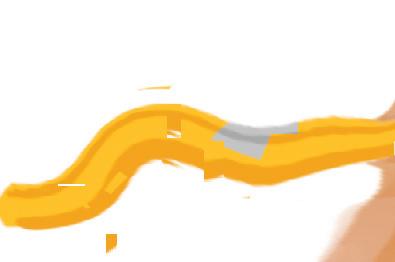

Countless AI art lters and generators have come to dominate trends on TikTok and other social media platforms, contributing to its prevalence. Services like the AI Time Machine can “create imaginary AI avatars of a person as he or she may have looked in di erent periods in history,” according to their website, the AI Manga and AI Portrait lters create bizarre and often comical images of users. Over 130 million videos have been created.
These art trends are fun and seemingly harmless, but the ethics of AI art have been the subject of intense controversy. Programs like DALL-E 2, Midjourney and Stable Di usion analyze thousands of images in order to generate artwork from nothing more than a user’s text description. With these algorithms, the apps often steal elements from human artists without giving them proper credit.
Art teacher and practitioner Dan Havel has had his artistic property stolen before. “I’m pretty concerned about the fact that DALL-E was programmed using imagery from other artists’ work without our consent,” Havel said.
“We don’t even know if our work will be shown through somebody else’s word poem.”

Nhu Chu, a Scholastic Art award-winning junior artist, notes that while articially-generated images will “become more of a presence” in the art world, they may have less impact on artists themselves.
“Human connection is what gives such great meaning to art — and what makes it memorable,” Chu said. “AI art
Sticking your head in the sand and pretending they don’t exist does not seem to me to be either an intelligent or productive answer.
DWIGHT RAULSTON
doesn’t have much intent, history or storytelling behind it, so it doesn’t work as well.”
According to experts, the key elements of art include lines, shapes, color, form and texture. While AI art achieves most of these elements, it looks “airbrushed” and “ at” to Chu, lacking the di erent textures that give artwork depth and movement. With human art, these textures can also reveal the process behind each piece.

“When you do a painting, you can see the paint strokes and the layers and the process itself in the creation of the piece,” Havel said.
provide nancial protections for artists.
In the art world, copyright infringement seems to have taken over the creative process. Havel argues that arti cial intelligence is not a clear-cut villain for aspiring artists.
“If you’re just afraid to try to draw something, AI could be an easy tool for people to at least feel comfortable getting into the creative process,” Havel said.

While AI is causing major anxiety among school administrators and the arts community, programs such as Siri and Alexa have been installed in household devices for years and have yet to cause the end of the world as we know it.
Although Siri cannot write ve-paragraph English essays in seconds, it is still technically a conversational AI — just like ChatGPT.
“AI has already sort of taken over,” says Guinn, pointing to his cell phone. “I carry this thing around me that knows where I’m going every hour of the day; it just sort of keeps track of me and trains me to act in a certain way. So in a way, the computers have won.”
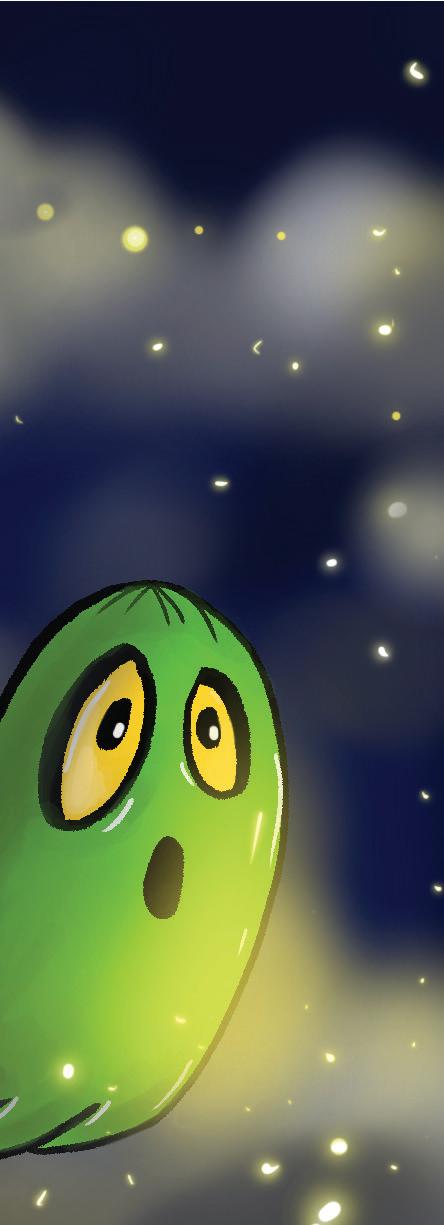
We asked ChatGPT to generate a list of statistics about itself. This is what it said.
1 OpenAI was founded in 2015 by Elon Musk, Sam Altman, Greg Brockman, Ilya Sutskever, Wojciech Zaremba, and John Schulman.
AI artwork, which can be generated in seconds, contradicts this concept. For Havel, art is about more than just the end product, and removing the thought and e ort behind artwork e ectively alters its meaning.
“A big part of the reason I’m an artist is because I like the physical aspect of challenging myself to create imagery,” Havel said. “I’m all about hands-on thinking. To sit back and let AI do all the thinking sounds kind of boring to me.” Still, AI-generated artwork can be a powerful tool in the artistic process. In the same way that a Google search can generate millions of reference photos, AI art programs can quickly create unique imagery to spark one’s inspiration. Havel views AI as a “part of the process” and is willing to incorporate it into his teaching as a tool, “but not a means to an end.”
Artists always found ways to adapt technological advancements, such as when photography gained widespread use. When artists no longer felt the need to render scenes with the same amount of detail as photos, Impressionism emerged, which emphasized brushstrokes and light over realism.
Today, the at, generic style commonly associated with tech company marketing, known as Corporate Memphis, has received criticism for its lack of creativity and depth. With such sameness, AI can easily replace corporate design by replicating its uninspired elements.
“AI can replicate the output without having to be conscious, self-aware or creative,” Raulston said.
While there can be restrictions placed against conversational AI like ChatGPT, modern technology is bound to evolve beyond any safeguards enacted by administrators.
Art and writing depend on human emotions and creativity, seemingly preventing them from being replaced by technology, but AI art is real, and it threatens the authenticity of artists and writers.
In order to keep up, the world must gure out a way to ethically integrate arti cial intelligence into society and
In the medical sciences, companies have employed computer systems to diagnose patients, transcribe medical prescriptions and develop new drugs more e ciently and accurately than human experts. Businesses have replaced online customer service with chatbots and have utilized arti cial intelligence to gather data on audience-brand perceptions and recommend products based on previous purchases. Some restaurants are experimenting with robot waiters that roll over to tables, perhaps with a cute, happy face on their screens, playing a jingly tune upon reaching its destination.
“You could point to any area of society, and there’s going to be AI development happening in that area,” senior Caden Juang said.
What this means for the job market is a di erent story. While there are many aspects of society yet to be digitized, more and more occupations that involve collecting facts from digitized documents are “going to either be replaced or at least reduced to someone supervising and checking the work out,” Raulston said. So courtroom judges might have some job security, but paralegals may not.
Occupations that are based on human interactions such as therapists, counselors, teachers and babysitters, will probably remain una ected by this technological growth, but the computers are learning quickly.
AI is becoming quicker at recognizing danger than humans. Robots can stack blocks and read a picture book without tiring, so if the purpose of a babysitter is to keep a child safe and preoccupied, who is to say that robots are not an ideal candidate for the job?
The Turing Test, created by Alan Turing in 1950, has long been the standard for arti cial intelligence. When the day comes that a conversation with a robot is indistinguishable from a conversation with a human, the next question becomes whether or not the robot should be considered alive, as well as what sort of morals should be imposed on it. Raulston is unsure on how this aspect will work out.
“If we don’t even agree on what morals are for, among ourselves, we’re sure as hell not gonna be able to extend it to something we understand even less well than we understand people,” he said.
The future of technology is nuanced, with the only guarantee being that AI is here to stay.
“AI is still a tool,” Raulston said. “Whether it becomes a good thing or a bad thing is mostly going to depend on how people employ it in the inde nite future.”
2 GPT-3 (Generative Pretrained Transformer-3) is one of the largest language models developed by OpenAI, with 175 billion parameters.
3 GPT-3 has been trained on a diverse range of internet text and can generate human-like text for a variety of tasks, including language translation, question answering, and summarization.
4 GPT-3 has been evaluated on a number of benchmark datasets and has shown stateof-the-art performance in several natural language processing tasks.
5 OpenAI has also developed other language models, including GPT-2 (1.5 billion parameters) and GPT-1 (117 million parameters).
6 OpenAI has received significant investment from a number of high-profile investors, including Elon Musk and Reid Hoffman, among others.
7 OpenAI has received attention and recognition from the AI community and the general public, due to its groundbreaking work in the field of AI and language processing.
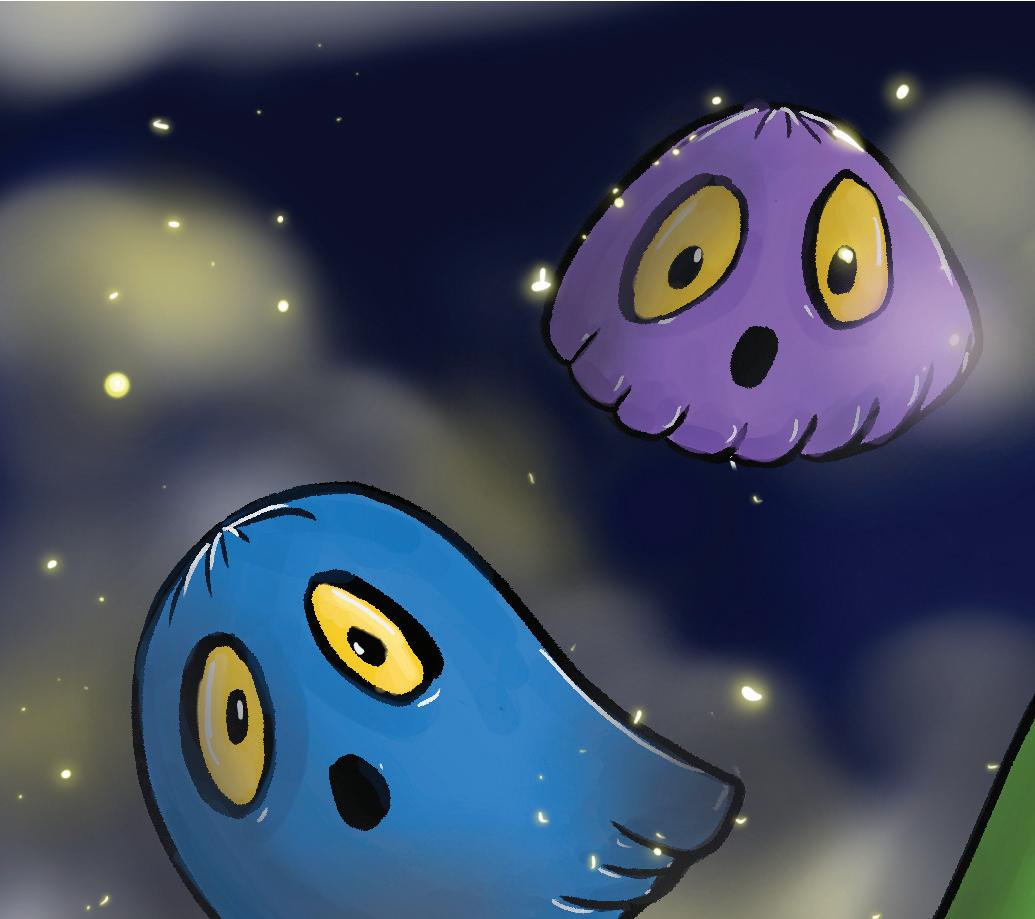 A 30-minute ghost doodle made using Procreate. ILLUSTRATION | Serina Yan
A 30-minute ghost doodle made using Procreate. ILLUSTRATION | Serina Yan
A big part of the reason I’m an artist is because I like the physical aspect of challenging myself to create imagery.
DAN HAVEL
Ashley Le Grange ew Southwest Airlines for the rst time over Winter Break — a trip that, according to the Upper School Counselor, will likely be her last with the embattled airline. Not only did Southwest lose one of her suitcases on the way to Florida, but they also canceled her return ight without booking her a new one. She spent $1,400 to rent a car for the 20hour drive home.
Le Grange was one of thousands of air travelers who needed a holiday miracle as a polar vortex gripped the country. Southwest experienced a complete meltdown after extreme weather overwhelmed its computer system, which led to the cancellation of around 17,500 ights just before and after Christmas.
The mass cancellations also separated passengers from their checked luggage. Southwest famously o ers a “bags y free” service, but customers who checked their luggage soon discovered that they could not reclaim their bags once their ight was canceled. Hundreds of bags were stranded on airport conveyor belts around the country. Photos of the “baggage graveyard” at Hobby Airport made the national news.
“Southwest stole Christmas,” said Michael Barbaro, host of The Daily podcast.
Le Grange’s ight to Florida with her six-year-old daughter went well enough. They arrived in Palm Beach, ready to spend time with family, but only one of Le Grange’s two suitcases arrived with her. She reached out to a Southwest supervisor, who claimed that her bag was lost because she had checked it late — Le Grange had arrived 75 minutes before her scheduled departure.
When Le Grange asked for help retrieving the bag, the supervisor said, “Whenever your bags are late, per Southwest, they can y your bag wherever they want.”
Whenever your bags are late per Southwest, they can fly your bags wherever they want.
SOUTHWEST SUPERVISOR
The bag was located in Fort Lauderdale, two hours away, and remained there for almost 36 hours. After repeated urging from Le Grange, the supervisor had the bag shipped to her parents’ house.
On the morning of Dec. 27, her ight back to Houston was canceled — even though the weather in Palm Beach was sunny and the ight was not scheduled to depart until 6 p.m.
According to Henry Harteveldt, an airline analyst with Forrester Research, when an airline cancels a ight due to weather concerns, it does not owe passengers compensation, making the weather “a giant loophole that airlines love to y through.”

Le Grange spent four hours researching ights on other airlines, but there was nothing available until New Year’s Day.
After posting an article on Facebook about how many ights had been canceled, a friend sent her a Facebook message to warn her that airline employees had been “yelled at, cussed at, slapped and spit on — ight attendants have been taking a beating.”
The last thing she wanted was to show up at the airport with “a bunch of angry passengers yelling at each other,” so she abandoned the idea of ying home. Instead, she rented a car (and spent an extra $150 for a car seat). Stopping for only one night, she drove 10 hours each day. As compensation for the inconvenience, Southwest credited her Rapid Rewards frequent yer account 50,000 points for her and her daughter. The points were equivalent to about $750 in cash — only half of the money Le Grange spent on the drive home. She would have preferred a refund of $1,400 before getting a credit to travel somewhere else.
After making frequent phone calls and sending countless emails, she did not hear back from Southwest until Feb. 3, when she received an email claiming that the airline will fully reimburse her — which they nally did, on Feb. 7. If they had refused, she would have “absolutely not” own Southwest again.

Sophomore Francesc Baizan’s club soccer team won the Dallas Cup, resulting in an invitation to the Disney Cup in Orlando over Winter Break. The tournament was an important opportunity to be seen by college coaches.
After hearing about severe snow storms across the
country, Baizan’s family started to worry.
The plane they were supposed to travel on was stranded in Michigan. They spent hours in Hobby Airport and on the phone with Southwest representatives, who told them that the entire system was down. To get a ight, they would have to wait on standby near the gate since it was impossible to book a ticket through the system.
was Southwest the would was United
Baizan’s family instead decided to book a ight on United Airlines that same day — at a much steeper cost.
I think they'll get past it. I've flown Southwest for 25 years and I've never had a problem.
COLLEEN KIMBALLWhile Baizan made it to the tournament, several of his teammates were not so fortunate. Some of his teammates arrived a day or two late because they decided to make the drive, but many missed the tournament altogether.
Without a full squad, the team did not fare as well as hoped — nishing with one win, one loss and one tie.
A week later, Southwest reimbursed the Baizans for their more expensive ight on another airline.

On Dec. 22, Director of Clinical Services Colleen Kimball and her two children were in New York City preparing to see a Broadway show when a text message noti ed her that their ight home the next day was canceled. Kimball cross-referenced the message with the Southwest app, which showed that her ight was, in fact, not canceled. Still, she wanted to make sure she could get home in time for Christmas. When she called the Southwest customer service line, she remained on hold for over an hour until she gave up when the show began. She phoned after the show ended, Kimball was put on hold yet again — this time for seven hours.
A customer service representative told Kimball that Southwest could not book a return ight until Dec. 29, but they did help her make a reservation with Delta on Dec. 26. Although she missed Christmas with the rest of her family, Kimball said she “had a blast” exploring New York City with her kids. Southwest gave her enough frequent yer points to purchase three future ights and reimbursed her for all expenses, including the Delta ight. Kimball will consider ying with Southwest again — once they resolve their myriad issues.
“I think they’ll get past it,” Kimball said. “I’ve own Southwest for 25 years, and I’ve never had a problem.” Science teacher Paula Angus was stuck in Franklin Furnace, Ohio, during the polar vortex, which resulted in the coldest Christmases in two decades.
“I was getting really nervous watching all the news coverage about Southwest canceling ights, all the luggage that was piling up, people getting stuck in airports,” Angus said. Her Dec. 27 ight was canceled the day before.
Angus got to spend four extra days with her mother, which was the “best case scenario.” They stayed indoors to escape the extreme cold, cooking and watching movies together.
While Angus appreciates Southwest’s two-bags- y-free policy, she says she is not loyal to any airline.
I was literally on the last flight of 2022 into Hobby Airport. We counted down on the plane to New Year's Day.
Angus eventually booked a ight back with Southwest on New Year’s Eve: “I was literally on the last ight of 2022 into Hobby Airport,” Angus said. “We counted down on the plane to New Year’s Day.”
For Southwest, the rst few weeks of the new year were all about damage control. According to the airline, they lost more than $1 billion from the meltdown. Further complicating matters, on May 1, Southwest pilots, who are negotiating a new contract, will vote on whether to strike.
On Jan. 16, Southwest CEO Bob Jordan sent an email to Rapid Rewards members, claiming that the company has processed nearly all refunds. “We fell short of your expectations and the high standards we have of ourselves,” he said, “and for that we are deeply sorry.”
of physics classes, and was instrumental in incorporating Promethean ActivBoards into the classroom.
Although Turk loved to playfully tease students about the stress of taking physics, even having “demotivational” posters tacked up in his classroom, he was also an advocate of mental wellness.
In 2013, Turk started the Boys to Men Club, a school-sponsored forum for male students to discuss the challenges in navigating manhood. Turk also frequently taught Krav Maga to members of Women Helping Empower Each Other, coached a kickboxing unit in P.E. and would often give up his lunch period to give tutorials in taekwondo.
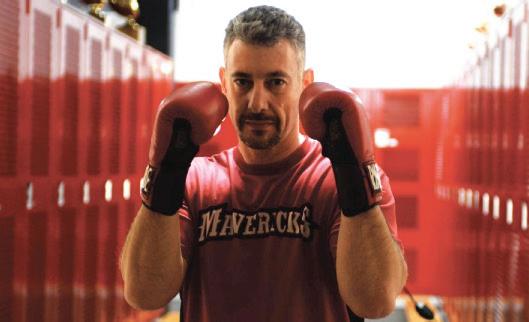
For years, Turk paired his love for martial arts and teaching by staging the Physics of Breaking Boards and Concrete in the VST. Spurred on by rock music and the assistance of several trusting colleagues, Turk commanded Newton’s Second Law to kick, punch and smash his teaching materials to mere rubble and splinters.
Erol decided to audit my Spanish class in the 2015-2016 school year. He gave up one of his planning periods to work on his Spanish, and he did all the tests and quizzes that the students did. Each day he partnered with di erent students to practice his spoken Spanish. He jumped right in and gave it his all despite having his own teaching load. I never had a faculty member take my class before. Erol made it such a fun and comfortable experience for everyone. After that year, Erol would try to practice his Spanish with me as much as possible. I am so grateful to have known him.
SHERIFA MEGUID KEHS, UPPER SCHOOLSPANISH TEACHER
By Wilson BaileyErol Turk, a beloved teacher who, for 25 years, brought physics to life at St. John’s by breaking boards, lying on beds of nails and jumping out of planes, passed away at his home on Dec. 23 due to complications brought on by a 2017 motorcycle accident. He was 51.
Turk grew up in Westport, New York, a small village near the Adirondack Mountains that he described as “a town with not even a single stoplight.” It was there that Turk was certi ed in scuba at 14, taking dives in Lake Champlain.
Always active, Turk developed an interest in contact sports at a young age when his father George, himself a boxer, encouraged his son to attend a karate class right after running a 5k race. What started as an e ort by his parents to “calm the thousand jumping monkeys in my head,” according to Turk, developed into a lifetime of action and adventure.
Turk attended junior high at Elizabethtown-Central School and graduated valedictorian of Westport Central High, forging intellectual curiosities in science, although he admitted to not being the strongest math or science student. One teacher even told him he would never make it as a physics teacher, which motivated him to become one.
At just 15, Turk opened his own martial arts school in Westport and ran it until he left for college. It was in the gym that Turk found he had a knack for teaching. At the State University of New York at Plattsburgh, Turk majored in Physics and earned a bachelor’s in Secondary Education.
Turk became a third-degree black belt in karate, but he grew disillusioned with the arbitrary scoring system in its competitions. He then turned to boxing and kickboxing, becoming pro cient in Muay Thai, a discipline known as “the art of eight limbs” due to its use of all body parts as a weapon.
He also stumbled into the performing arts, appearing in two productions of the Nutcracker Suite and serving as the production manager for the New York state pageant.
“The ballet academy needed guys, and I wanted to dance with all the cute girls who wouldn’t talk to me otherwise,” Turk said in a 2013 interview with The Review Online.
While teaching at Pitts eld High in Western Massachusetts in 1998, Turk earned a master’s in Education and Integrated Science from Cambridge College in Boston.
Later that year, Turk was in search of a job while attending a national science teachers conference in Las Vegas. Roxie Allen, then St. John’s Science Department Chair, was also in attendance and look-
ing to hire a physics teacher. They barely missed each other on account of Turk adventuring in nearby canyons, but they connected later over the phone.
Turk’s résumé got everyone’s attention. In the section regarding his interests, he wrote: “kickboxing, martial arts, skiing, scuba diving, hiking, dancing, skydiving, traveling and punting chihuahuas for distance.” He was own in for an interview.
When Allen asked if he needed any materials for his sample teaching lesson, Turk requested some boards and cinder blocks.
Turk, then 26, arrived on campus in the middle of winter wearing a white linen suit. He “wowed” the hiring committee with his rst of many demonstrations breaking boards and concrete. Over the next 25 years, Turk became one of the most impactful mentors and colorful characters on campus.
In 2001, Turk married Eliana Trevino in Monterrey, Mexico. After seven failed adoption attempts, Turk and his then-wife nally adopted two girls from Colombia, Olivia and Lucia, in 2007. When they came home, Turk was prepared. He had spent a semester studying and befriending all the 12-year-olds in Ms. Prendes’s sixth grade advanced Spanish class and started the Knitting Club, which taught students how to crochet baby clothes for orphanages.
When Upper School Administrative Assistant Rebecca Leakey and her husband, ne arts teacher Anthony Leakey, were going through the adoption process themselves, she went to dinner with Turk to get his perspective. The conversation lasted six hours, starting at one restaurant until it closed, and relocating to House of Pies.
Along with Leakey and Science Department Chair Susan Bigge, Turk later formed the uno cial Adopted Daughters Club.
When he rst came to St. John's, Turk taught Physics Honors and Physics I. Back then, physics was considered a “fringe elective” for STEM kids. Turk not only made physics accessible, he made it fun. By 2003, physics had become a graduation requirement.
“Erol had a talent for walking kids through conceptual wilds,” Head of School Dan Alig said during a memorial for Turk on Jan. 3 at St. John the Divine. “He had a way of conveying intellectual exuberance and quirkiness, wholesome Upstate New York sincerity and kindhearted irreverence all at the same time.”
In an e ort to bring physics to life, Turk would demonstrate lying on a bed of nails, incorporate the footage of himself skydiving into his lessons and even give lectures after inhaling helium and sulphur hexa uoride — chemical compounds that made his voice both impossibly high and low, respectively. He also created the Rube Goldberg Machine project, now a staple
Through his infectious mix of sarcasm, empathy and adventurous spirit, Turk quickly became a student favorite. He sponsored the Student A airs Council and was frequently asked to write the most college recommendation letters of any faculty member. He also regularly made Texas-shaped pancakes for his advisory on the burners in the physics room.
As much time and e ort Turk spent on his students, he was also there for his friends in the best and worst of times. Turk often hosted faculty get-togethers at his home — including wedding and baby showers — all featuring his famous apple pie. When a colleague underwent chemotherapy, he drove her to and from school each day.
Beyond the classroom, Turk had a zest for life. He skydived, made tours across America on his motorcycle and trained for his return to the ring in Thailand.
“I go skydiving because my mom told me I couldn’t, and it’s cool to teach about,” Turk said in 2013.
In 2017, Turk was involved in a motorcycle accident when a minivan cut in front of him as he was on his way to school. For the most active and expressive man on campus, paralysis was going to be his toughest ght yet. His approach to the physical therapy process was trademark Turk: “The most challenging thing has been getting my therapists as motivated as I am,” Turk said in a 2018 interview. And after grueling therapy sessions, his door was always open for visits from students and faculty, greeting each visitor with a few puns and a “how’s campus?”
Less than a year after the accident, Turk made his return to the classroom by proctoring study halls. He would often wake up at 5 a.m. to arrive on campus, knowing it would take two hours every day to get ready. He resumed teaching physics the following semester.
In the ve years since the accident, Turk proved that paralysis was no match for his un agging optimism.
“I’m proud to say that the person I aspired to be before the accident is the person that I am now,” Turk said in 2018. Amid all of his adventurous pursuits, Turk maintained his positive perspective. “I’m not an adrenaline junkie. I’m someone who likes to enjoy life. It’s not the number of years you get to live, it’s how much life you t into those years,” Turk said. “There’s a whole bunch of things I’m very lucky to have gotten to do in my life, and I’ve had a lot of fun.”
Erol represented the Science department, and he was one of the few teachers who wrote over 25 recs a year! Erol was instrumental in changing how comment forms were collected and who was asked. It used to be that every junior teacher had to complete a comment form, even if they wrote a rec letter. We changed that. We also changed when students asked for rec letters, and more importantly, Erol helped to make sure teachers who wrote 15 or more rec letters were given a professional writing day. He made sure that this day was not called a professional development day to honor teachers and the work they were doing.
JAMIE KIM, DIRECTOR OF COLLEGE COUNSELINGIthink of Erol with 3 Ps: Prankster, Passionate and Positive. Four of my kids had Erol for physics, and each one loved his class! Knowing that I o ced down the hall from his classroom, he would have me come by to see what the kids were doing.
As the consummate prankster, he often used me as a guinea pig or the butt of a joke. He asked me to be the rst one to touch the Van de Graa generator one day to demonstrate to the class — my long hair stood out like a straight, huge globe. There is a photo of that somewhere that I hope never resurfaces!
Another time, he invited me in and, little did I know, he was playing the sound of a mosquito buzzing. All the kids were laughing because they could hear it, but I couldn’t. Erol was demonstrating how we lose hearing as we age.
Nice!
Erol loved his subject matter and made it so much fun for his students. He was also passionate about serving others. He sponsored the Knitting Club on Tuesdays, and he never failed to hang his light blue knitted blanket in the hallway to remind everyone that it was the day to make blankets and hats for newborns.
Erol had a kind word for everyone. After his accident, that didn’t change. If you visited him in the hospital, he would make sure that you had a place to sit, and he was full of questions about how you and everyone you knew were doing. He never once complained about what he couldn’t do, but he was always focused on what he could.
Erol’s legacy will continue on, and while I’ll never be able to prank anyone as well as he could, he continues to inspire me and so many others to be passionate and positive. A longer version of this article was originally published on The Review Online.
MARCI OESCH BAHR, COMMUNITY SERVICE COORDINATOR
When students ask Upper School Receptionist Pam Mulligan
if she is the namesake of the School’s popular springtime holiday, Mrs. Mulligan’s Birthday, she always gives the same line: “I’m old, but I'm not that old!”
The holiday dates back to the School’s founding in 1946, long before the current Mrs. Mulligan was born. But the original Mrs. Mulligan was too good to be true.
As it turns out, she was an invention of the rst Head of School, Alan Lake Chidsey. According to legend, she was a New Hampshire shopkeeper who would unexpectedly close her business on random days. Customers would know it was such a day when they saw a familiar sign on the door: Closed — My Birthday. Chidsey, who enjoyed poetry, music and
creative playwriting, developed the character to authorize the “catch-all, surprise holiday,” according to “Faith and Virtue,” the 2014 history of St. John’s School.
“The holiday was one of the fun, crazy things they brought in,” according to archives volunteer Anne Peden Tucker ('63). “There weren’t many school holidays back then, and it was unpredictable.”
On the rst Mrs. Mulligan's Birthday, Deborah Detering ('59), who was in Lower School when the holiday was established, arrived at school to see the sign posted outside Claremont Circle.
Chidsey would make the announcement over the loudspeaker system: “And you knew whose voice that was,” said Rebbecca Jay, former administrative assistant and registrar, who now volunteers in the school archives. “It was a very dramatic voice.” He would state which day the holiday would occur — sometime in the following week.

The impromptu day o also helped cover the unexpected days when power outages or sta shortages necessitated a school closure.
Over time, the unpredictable holiday was added to the School’s o cial calendar. As more mothers entered the workplace, administrators decided to schedule Mrs. Mulligan’s birthday in advance to make it easier for families to nd childcare.

The current Mrs. Mulligan joined the sta in 2014 when her husband, Rev. Ned Mulligan, was hired as Director of Spiritual Life. She said that the confusion between her and the Mrs. Mulligan holiday started

 By Lauren Baker
By Lauren Baker
Rather than spend his Sunday nights relaxing or catching up on schoolwork, Joaquin Ramos Chiao plays jazz piano at the Gypsy Poet, a Midtown artisan pizzeria. Between gigs, lessons and practicing, he plays about three hours a day.
Like many piano players, Ramos Chiao’s mother signed him up for lessons as a toddler to learn the basics. His family received their rst piano as a gift from St. John’s. He has studied with SJS piano instructor Michael Zuraw since he was eight. He supplemented his classical training by acquainting himself with other forms of music, including his future forte: jazz.
During the pandemic, he immersed himself in new techniques and sounds, but it took him a while to get in the swing of things.
“It was more like a gradual growth into the musician I am today,” Ramos Chiao said. “It's been constant growth since then. Every week I nd myself listening to new sounds and expanding my repertoire.”
Ramos Chiao credits Bill Evans’ 1961 album, “Village Vanguard,'' for getting him into jazz. He augmented his taste by nding more niche artists, listening for details that he could incorporate into his own style.
“I nd what I like and what I can resonate with in their music,” Ramos Chiao said. “I try to analyze why I can relate to the music and apply it to my own sound.”
Ramos Chiao di erentiates between knowing a tune and a composition: a tune is what a composer writes, but knowing a composition allows the performer to take the outline of the song and add their own voice. The performer can then take creative license to add new runs and harmonies.
“You can really express yourself; it’s directly what's coming out of your brain,” Ramos Chiao said. “You're the composer.”
The “expressive freedom” of jazz appealed to Ramos Chiao. He listened to di erent versions of the same song to hear how performers applied their own style to the tune. He says that in classical music, “consistency is the name of the game,” but he prefers jazz improvisation because he can change the tune every time he plays.
“It was almost like learning another way of speaking,” Ramos Chiao said. “Jazz is a language where you can express yourself.”
Zuraw said that jazz and classical piano are two related, but entirely di erent languages and, with his help, Ramos Chiao is working on distinguishing when to use jazz techniques and when to use classical ones. According to Zuraw, the distinction is important because of the history behind each style.
Jazz is an inherently American art form that re ects the American experience, while classical music relies on the history and traditions of the original composer. While studying jazz was initially a passion project for Ramos Chiao, he now uses classical music to supplement his jazz playing, helping him also to improve classically.
Overall, Zuraw says jazz training has improved Ramos Chiao’s con dence in playing and comprehension of classical music.
“Understanding what we’re playing sorts out the learning process,” Zuraw said.
“Rather than feeling it from note to note, he looks at things in a much bigger picture.”
Ramos Chiao has played in the Jazz Band for the past three years. Band director Nicholas Thomas says his playing re ects his passion, noting that he can adapt to any style of jazz.
“After rehearsal, he's still playing,” Thomas said. “He spends a lot of time experimenting with his ideas and he thrives on that freedom.”
almost right away.
“I always get asked the question, and I try to tell them the history,” she said during an interview, which occurred, coincidentally enough, on her birthday.
She is a ray of sunshine. Every day I walk by her desk, and I know that seeing her will always start the day off positive.
GARA JOHNSON-WEST
Before moving to Houston, Mulligan worked in healthcare sales for Cigna and ran her own hiring consultant rm. She has since worked at several independent schools, serving in a variety of positions. In her part-time role as receptionist at the Parents’ Desk, she continues to connect with students and faculty.
“She is a ray of sunshine,” said history teacher Gara Johnson-West. “Every day I walk by her desk, and I know that seeing her will always start the day o positive.” French teacher Elizabeth Wilcutt adds, “she has a way of making everybody feel known and loved. She is a great connector of people.”
Mulligan is passionate about gardening and her two springer spaniels, Roxie and Hogan. Together, the Mulligans enjoy traveling to the beach, especially in Charleston, South Carolina, where they plan to retire one day. She also enjoys baking and often brings cinnamon mu ns, blonde brownies and lemon pound cake with icing to share with friends and colleagues.
Her colleagues admire how she has, in a short amount of time, created a lasting impact on the community.
“Even before you knew you needed her there,” Johnson-West said, “she was there.”
Ramos Chiao has sought further immersion into jazz beyond school. He takes masterclasses organized by his main ensemble, Jazz Houston Youth Orchestra, and he spent last summer at Interlochen Center for the Arts in Michigan.
Ramos Chiao has built connections with other musicians through JHYO. He has also become friends with many students at the High School for Performing and Visual Arts because he values the community aspect of music and tries to surround himself with other people who share his passion. The jam sessions with friends and more experienced musicians have helped him further broaden his horizons.
“Any time you're playing is an educational experience,” Ramos Chiao said. “You're learning from yourself and from others.”
Ramos Chiao plays a couple of gigs every week, including Sundays at the Gypsy Poet. He usually secures bookings through friends or teachers.
Even though his mother recommended he play gigs freshman year, he did not believe he had the skill to play longer sets. Seeing himself make progress in just two years has been satisfying.
When looking at colleges, Ramos Chiao is considering what schools have a good music community, and he is leaving the door open to pursue music for his own enjoyment even without majoring in it. His main concern about moving into music professionally is the lack of resources. After hearing stories of nancial insecurity from other musicians, he says playing professionally would only bene t him by supporting his passion.
“There's not enough value for the arts in this country,” Ramos Chiao said. “If there’s more funding, I'll think about it seriously. But right now, music is mainly to feed my soul.”
Everyone’s latest obsession from HBO, “The Last of Us,” opens with ctionalized archival footage of some long-forgotten talk show from 1968. Two scientists discuss what worries them about pandemic scenarios facing the planet.
Before the AIDS epidemic, before Covid, before we even really understood the long-term dangers of tobacco (the scientists are smoking in the studio) — the stage is set for fear. One of the scientists posits that a fungus will become a bigger threat than any virus. The host laughs — what’s so scary about a mushroom? The scientist explains that fungi have given us LSD and Penicillin. “Viruses can make us ill,” he warns, “but fungi can alter our very minds.”
Fast-forward to Austin, Texas, circa 2003. Joel Miller (played by Pedro Pascal) is a single dad trying to raise his precocious 14-year-old daughter Sarah (Nico Parker). It’s his 32nd birthday. That night, as Sarah waits for her dad to return from a construction job, the Outbreak begins and tragedy strikes.
The scene is excruciating, exposing the audience to a death that is not valiant or heroic, nor meaningful or important, but just sad.
When the story picks up again 20 years later, we are in present-day Boston where Joel and the other survivors of the zombie apocalypse are struggling with daily survival, until an unexpected chance for escape and redemption presents itself.
Zombie media has been a staple of American culture, most recently peaking with the popularity of AMC’s “The Walking Dead,” which premiered in
scenarios,” have permeated our collective consciousness for decades.
adaptations of Richard Matheson’s 1954 1963 novel “Cat’s Cradle” or the Max Brooks novel-turned-Brad Pitt movie “World War Z,” everyone can relate to the innate fear of what it would be like to
George Romero’s low-budget 1968 horror classic “Night of the Living Dead” (and its many sequels, remakes and imitators) de ned the genre. We have been obsessed with worst-case scenarios ever since, inspiring Danny Boyle’s
Warning: Spoilers!
By Sophia JazaeriIn a
Clickers are a kind of zombie that use sharp hearing to track down their prey. The creatures are a welcome departure from the horde of uninspired zombies that have recently cropped up in film and TV.
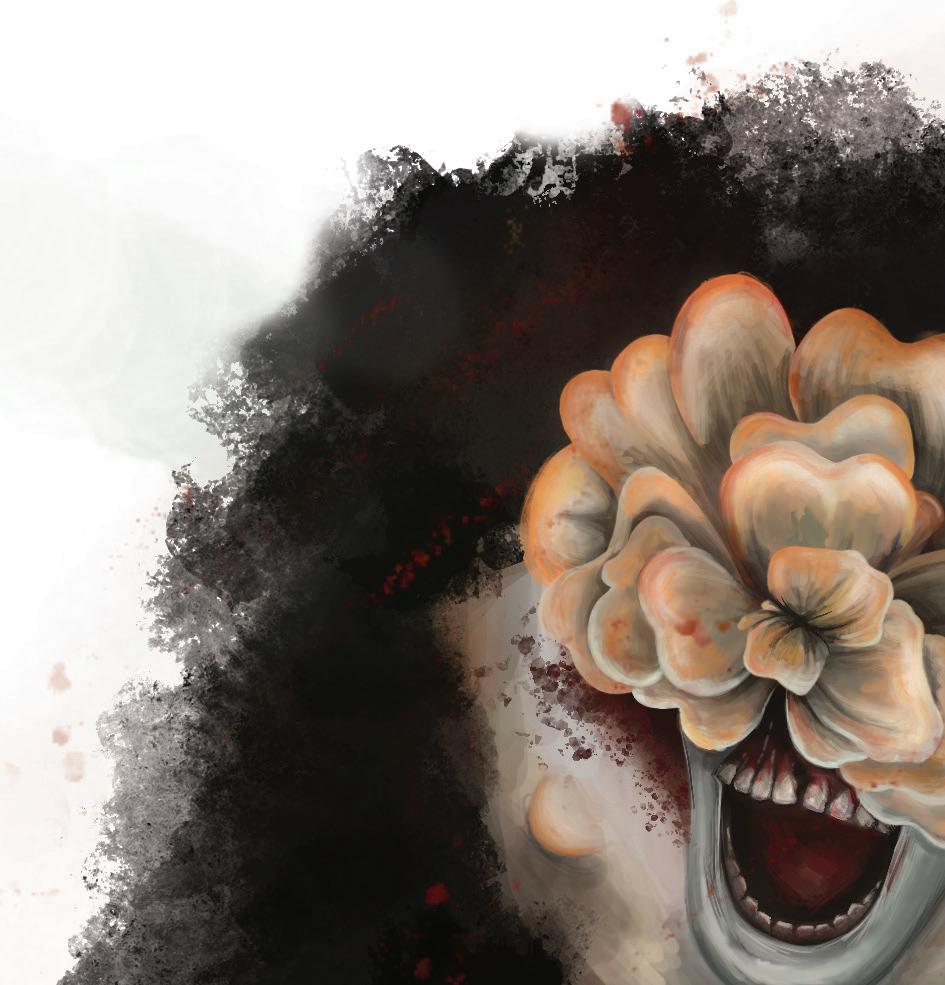
“28 Days Later” in 2002 and Edgar Wright’s comedic “Shaun of the Dead” in 2004. But lately, apocalypse horror has become a parody of itself.
Zombie stories are their own genre, one underscored by satire and overacting. It hasn’t been must-see television for a while (the Korean Net ix series “All of Us Are Dead” notwithstanding). I didn’t think it was possible for a zombie story to escape the shadow of mockery and parody, that is, until Jan. 15, when HBO dropped the rst
episode of their live-action adaptation of the critically acclaimed video game, “The Last of Us.”
From the beginning, it was evident that this would be the series to change the perception of the zombie genre — and what prestige television could be. Gripping, dense, and charged with passionate craftsmanship — the rst ve episodes have been a masterclass in writing, direction and cinematography. The actors bring an intense power that makes each scene almost painful to watch. You can’t help but hold your breath when they have to be silent, or wince when they’re hurt. Pascal, free from the beskar mask of the Mandalorian, delivers a gripping performance that takes your breath away.
Bella Ramsey (Lyanna Mormont from “Game of Thrones”) is perfectly cast as Ellie, a petulant, unworldly and relatable teenager who might hold the key to a better future.
To fully understand what the show represents, you have to accept one simple truth: Beyond the special e ects and fancy makeup, “The Last of Us” has less to do with the apocalypse and more to do with the lives of the people within it.
In the episodes that have been aired every Sunday at 8 p.m., the show often forgoes action in favor of exploring interpersonal relationships.
series about people being infected by fungal spores that turn them into vassals of chaos, the tension keeps you wrapped in the grip of love, loss, morality, purpose and, most poignantly, family.
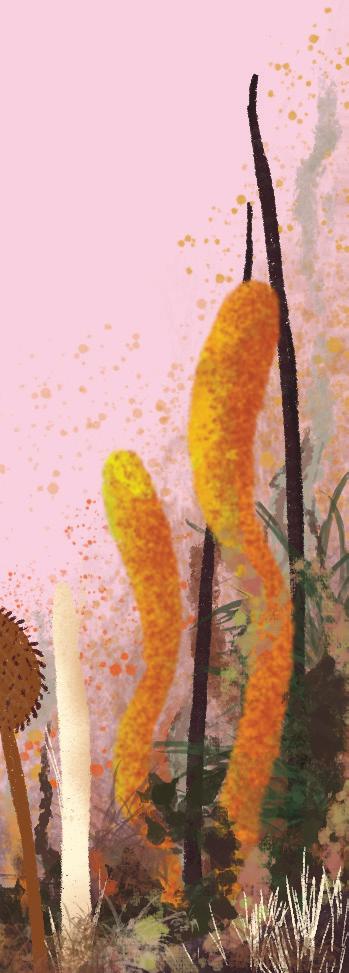
So why this show? Why now? The guiding force behind horror has always been about what scares us at that time. Zombies can be
on the era. Many viewed the original “Night of the Living Dead” as a reaction to the fear of communism — a slow-moving menace that will eventually consume the world. a response to the sudden 9/11 attacks. Politically, zombies represent a mindless horde following the same directive (and on a quest for brains).
fear of an unstoppable virus is certainly more plausible now than in was in 2009 when the original video game was being developed, during the worst of the Great Health Organization declared swine u a public health emergency.
video game duology, “The Last of Us”
Ophiocordyceps unilateralis. This fungus latches onto ants, travels through their exoskeletons, and forces them to march to their own death, simultaneously releasing a cloud of spores from a bulbous sac that infects all the other ants in the colony. A zombie ant.
In “The Last of Us,” cordyceps have evolved to take over humans in the same manner.


Cut to the opening credits, where our sweet cordyceps overwhelms the inky blackness of the title card, not a human in sight. And it’s Outbreak Day.
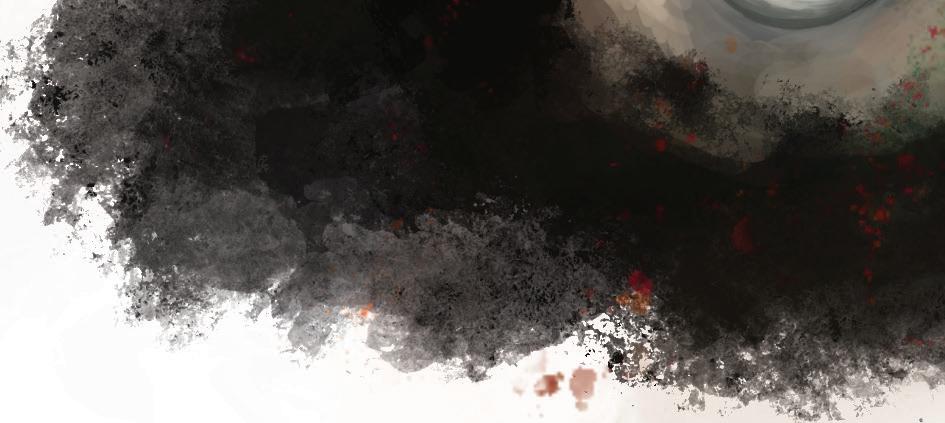
The thing that this episode does best is establish the world we’re working with and the motivations behind our main characters, who each get a moment alone with the audience. This focus on humanity manages to entertain those who have already played the video game while introducing new fans to the cast.
The most notable moment is the rst character death of the series. Joel’s daughter Sarah, played by the talented Nico Parker, dies in front of our very eyes. She writhes in the grass, consumed by an unexplainable and violently fresh pain that no child should — or can — endure. The camera remains xated on her face as she gasps for breath, teary-eyed, her bloodsoaked stomach still in view. Although wordless, Parker’s performance comes across as though she is begging her father for help.
And, most importantly, her death is pointless. A soldier shoots her on the o -chance that she might be infected. She isn’t.
There are few things so devastating as a grown man, whimpering, clinging to his daughter’s body, begging his “baby” to stay.
Aside from the utter emotional damage that this scene in icts, it also sets up the core themes of the show: loss and family. As far as pilot episodes go, “When You’re Lost in the Darkness” is a masterclass in how to showcase the potential of a new series, and set the standard for the tone going forward.
(“Chernobyl”) have created identi es and preys upon our deepest fears of endless loneliness scares us the most.
monsters help, too.
Writer’s note:
As any high school student will tell you, the term “hookup” is a nebulous term. Although it refers mostly to kissing, in casual conversation and this article it designates a no-strings-attached encounter.
This subject has been on my mind for a while this year. A few months ago, after listening to one too many rants about the unfulfilling state of affairs in our grade, I decided to do something more purposeful. The goal in compiling these stories is to give us something to contemplate. There is no right or wrong way to go about high school relationships, but I hope that with an article that relies more on substance than sensationalism, we can start to be intentional in pursuing what we want.
The junior’s experience was not like the movies — there were no reworks.

“For basically my whole life, I would have said that your rst kiss should be a momentous occasion,” said Hanna, not her real name. But when a boy in her grade asked if she was interested, “it was barely even a question for me — I didn’t know when the chance for my rst kiss would come around again.”
Hanna’s story epitomizes an anxiety shared by many girls: that their rst kiss, and anything it may lead to, will be devoid of romance. But in an environment where one-night,

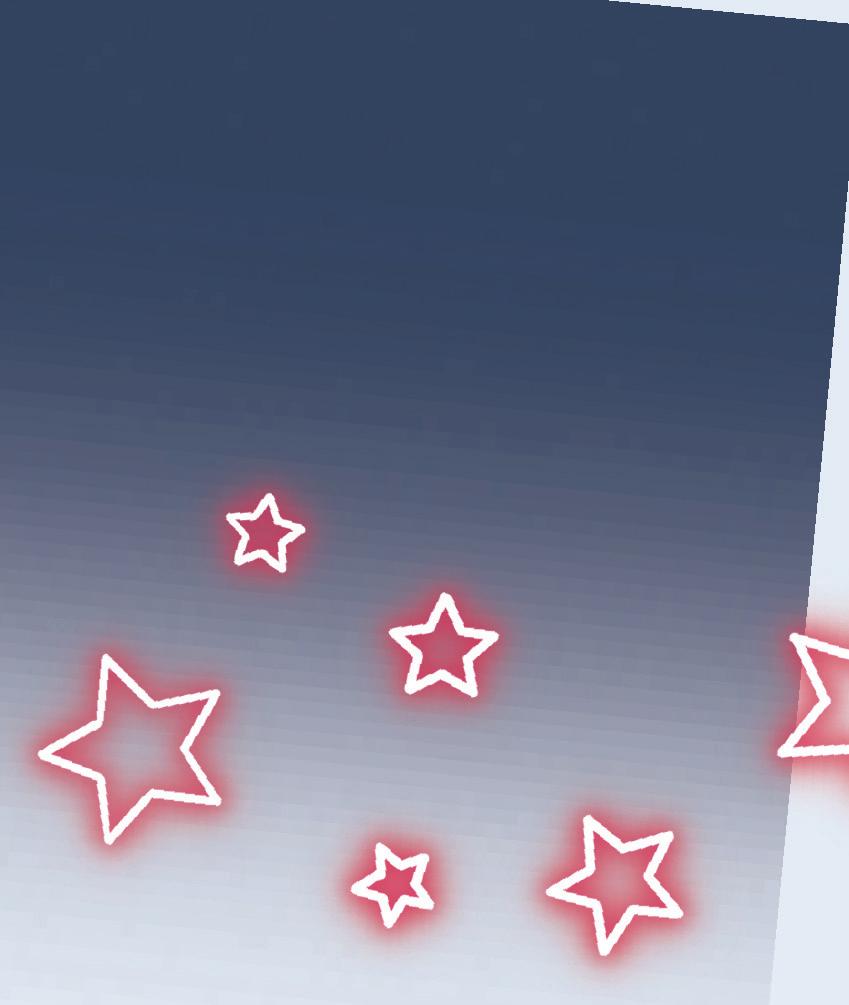
PEOPLE FELT LIKE I VIOLATED THE UNSPOKEN EXPECTATION THAT GIRLS SHOULD AUTOMATICALLY GO ALONG WITH WHAT THE GUY WANTS.
no-strings-attached hookups are commonplace, settling for what’s available seems like the only option. about it all wrong.

traditional relationships in most grades are few and far between, talking about hookups provides a much-needed break from the monotony of academics. For many, gossiping about who did what with whom serves as a dependable conversation starter, a way for people to examine the social scene without having to speak about themselves.
“I love to gossip,” said Brynn, not her name. “It’s a way that I can be funny, or be interesting, or show that I’m in the know — but I’m also not really risking anything.”
Most gossip is ine ectual, and since hookups generally happen within the same social groups in every grade, they ultimately lose their shock value. But every once in a while, there is one that gets everybody’s attention. Such was the case with Hanna.
When she returned to school on Monday after having her rst kiss on Saturday night, Hanna said, “It seemed like everyone wanted to talk to me about it. People I didn’t really know, wasn’t friends with — they all wanted to know all about how it was and how I was feeling.”
have

Leonidas Iliopoulos abhors hookup culture, or at least the version of it he has encountered at St. John’s. For a topic that everyone seems so xated upon, he says that we are going “A hookup should be based on more than just a physical connection,” Iliopoulos said. “There should be chemistry — and conversation — and if you do it right, maybe you have feelings for each other at some point in the night.”
A recent addition to the St. John’s community, Iliopoulos moved from Slovakia only seven months ago as a part of the Assist Exchange program. Back in Bratislava, he was a social guy, yet he considers the SJS party scene a bit of a letdown. He feels like he is in an environment that actively tries to prevent him from having a good time.
In August, Iliopoulos attended his rst American house party with his new junior classmates. The host had a pool, so he decided to go for an impromptu swim, even though he was without proper swim attire.
“I jumped in the pool, and suddenly everyone was so worried about the fact that I was in my underwear,” Iliopoulos said. “Why does it matter so much?”
Iliopoulos admits a predisposition to going against the ow, but he feels like his American schoolmates are so concerned with having fun the so-called “right way” that they end up not having any fun at all. Especially when it comes to getting together, Iliopoulos has noticed that people are overly wrapped up in following a speci c protocol: “guy walks up to girl, they say ve sentences to each other, and then they go to his car.”
This prescribed view of pseudo-romance ends up limiting both the number and emotional depth of these entanglements, according to Iliopoulos.
Iliopoulos articulates a common grievance with SJS parties — they are kind of boring. “People will always nd something to complain about,” Iliopoulos said.
This view is shared by ninth-grade students like Stephanie, who attributes this lackluster party scene to a hyperfocus on hookups. “Freshman parties are practically segregated by gender,” said Stephanie, not her real name. “If someone crosses that barrier, everyone assumes they are going to hook up — and suddenly that’s all anyone can talk about.”
he fact is at parties, or anywhere else for that matter, hookups dominate conversation. Because students are generally focused on their academic workload, and





That week Hanna reveled in the newfound attention, answering dozens of barely distinguishable questions from other girls: How was it? Was it your rst? Do you like him? Are you going to the party this weekend? Is it going to happen again?
That Monday marked the beginning of Hanna’s era of notoriety. While privately regretting the underwhelming nature of her rst kiss, she was nonetheless excited by the prospect of future invites to parties and garnering more attention around school.
Junior Ria Pawar says that hookups lend an air of intrigue to someone you might not otherwise know — but it is easy to overdo it.

“There’s a pressure in our grade that if people don’t have hookups, it’s assumed that they’re boring or can’t get play,” Pawar said. “Once they do hook up with someone, everyone will say they’re doing too much.” Hank, a junior who asked to remain anonymous, adds that people will be quicker to jump to conclusions about girls who engage in hookups.
Such double standards can wrap up participants in a world that seems appealing but is complicated by classmates who will make assumptions about one’s Stephanie, for example, is acutely aware that she has been talked about behind her back, and she has spent the past few months coming to terms with the way people now
A HOOKUP SHOULD BASED ON MORE THAN A PHYSICAL CONNECTION. THERE SHOULD BE CHEMISTRY — AND CONVERSATION — AND IF YOU DO IT MAYBE YOU HAVE FEELINGS FOR EACH OTHER AT POINT IN THE NIGHT. character. perceive her.

“I hooked up with one guy, and all of a sudden everyone had these preconceived notions about me,” she said. “People who don’t know anything about me, have never spoken to me, can claim some sort of insider information.”
Whenever Stephanie nds herself walking past the athletic team of the
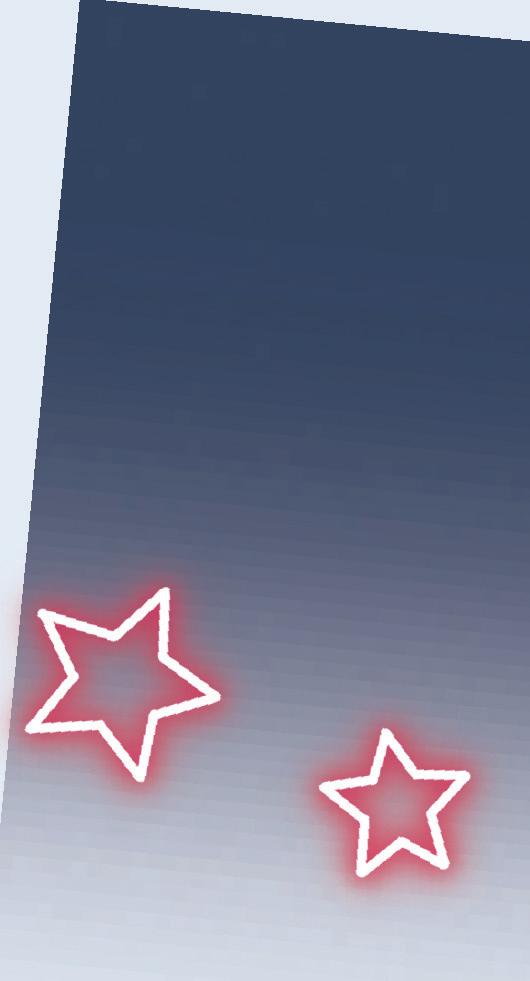
said he had sexually assaulted her, she realized the perils of an over-publicized encounter.

should focus conversations on their comfort level with potential experiences with hookups get branded as shallow or self-absorbed,” Le Grange said. “But it’s so important to do the self-examination ahead of time and know whether




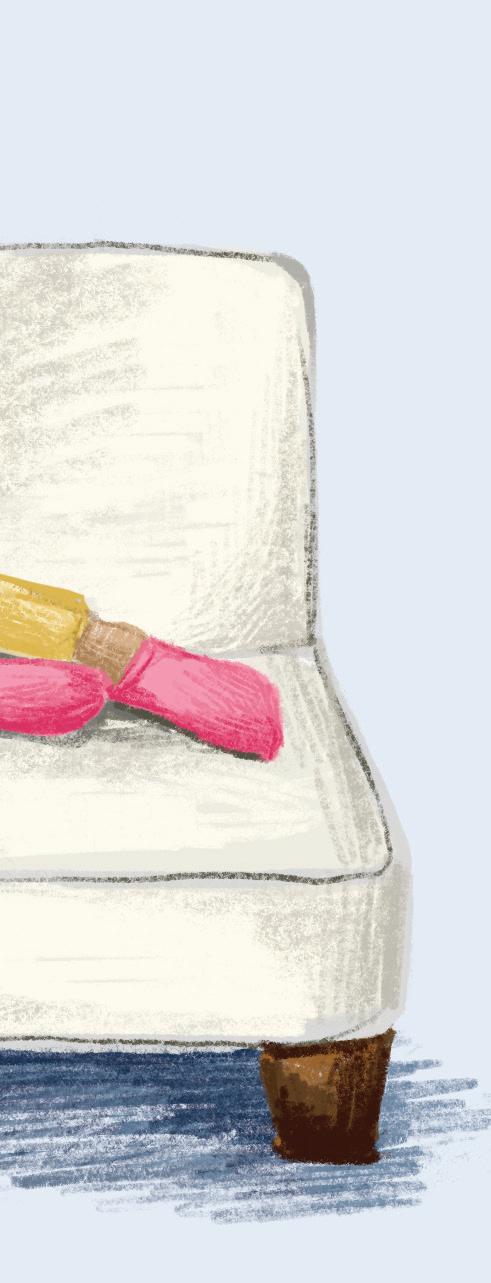
Things started to get complicated for Hanna as soon as feelings were introduced into the equation — not just for her, but for everyone else tuning in and talking about her situation.
A week after her rst kiss, Hanna found something unexpected attached to the hookups: strings. She kept hearing that the guy she had gotten with had real feelings for her. She did not reciprocate.



When people found out that Hanna wasn’t interested in taking the next step, they got upset. The buzz surrounding her hookup turned toxic.
“People felt like I violated the unspoken expectation that girls should automatically go along with what the guy wants,” she said. “And when it seemed like I had messed with his feelings, they didn’t like that.”
to start a meaningful conversation with a girl and gure out if I want to date her.”







As someone in a long-term relationship, Co ey says he nds fault with the super cial system that is hookup culture.
Instead, Co ey recommends a “talking stage.” He says a physical connection that starts with emotion will be more rewarding than one based solely on attraction.

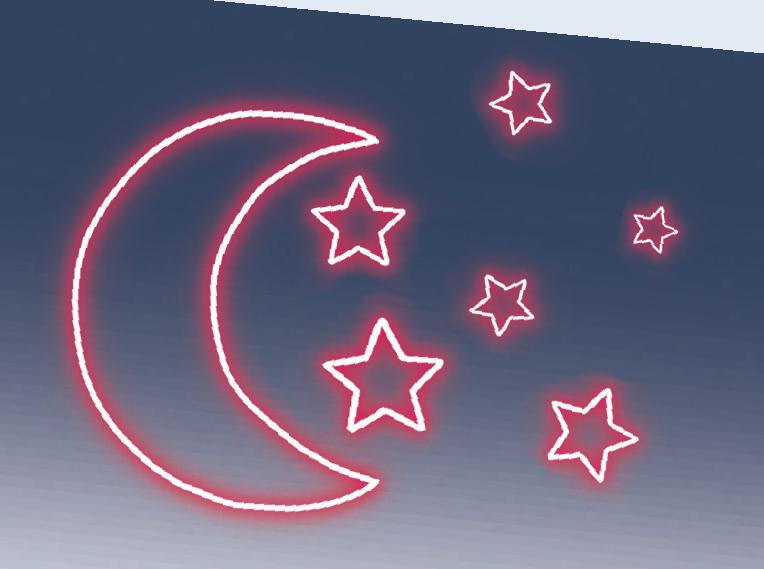
Anthony thinks most of his friends have yet to experience the kind of connection that would motivate them to take themselves “o the market.” So, like many others, they nd themselves content for the time being with hookups.

Months later, Hanna is still single. A combination of no immediate prospects and no time has prevented her from pursuing a boyfriend. She says that, with the classes she takes and her extracurricular commitments, it wouldn’t be feasible to maintain a romantic relationship.

“I’m not interested in the highs and lows of high school football,” she said. “And I don’t have the energy on a daily basis to pretend that I am.”
Hanna admits that her last experience also scared her away from relationships. She has seen what life under a microscope is like, and she’s not eager to experience that again.
mental toll that accompanies hookups.

“At a certain point, when you know everyone is labeling you a certain way, it’s hard not to look at yourself through that same lens,” Stephanie said.
Ria Pawar attempts to balance the positive and negative emotional e ects of getting with people. Her personal preference is that a guy approaches her, and she thinks most girls steer away from initiating potential hookups because it detracts from that validation of being wanted. Hank says that, as a guy, it’s comforting when a girl says yes to a hookup after he has stuck his neck out to propose it. Pawar explains that girls just like to be asked.

“There are so many girls in our grade who hook up with guys just to feel accepted,” said a junior girl who asked to remain anonymous.



Stephanie thinks of herself as a relationship person, but she accepts a less permanent arrangement.




“I’m absolutely settling,” Stephanie said. “But I don’t want to miss out on these experiences, so I take what I can get.”
Yet even with limited options, there are those who refuse to buy into hookup culture. Brynn is saving her rst kiss until she nds the right guy.
“I don’t want to feel used — I want to feel wanted,” she said.
“And the thing is, nobody’s going to care if it’s your rst time if it’s not theirs.”

These days, Hanna is open to some low-stakes fun if the opportunity for a hookup presents itself. But she hopes that someday soon she’ll get to feel those reworks.

“If you asked me now, I would tell you that a rst kiss doesn’t really matter,” Hanna said. “At least that’s what I’ve had to convince myself.
Additional reporting by Georgia Andrews

“The people who had been so excited for me when I had that rst hookup were the same ones who had turned around and talked badly about me behind my back,” she said.
spring into action to defend a guy’s feelings than to defend a girl’s.



“It’s assumed that girls are going to catch feelings,” Stephanie said, adding that few will condemn a boy who has given a girl false hope
ing a


Stephanie adds that her ninthgrade peers are far more likely to potential longer-term relationship. “But every once in a while a guy feels like he’s been led on, and people just get so pressed.”

Hanna and Stephanie attribute this reaction to the assumed rarity of guys who would be willing to emotionally commit.
Juniors Kieran Co ey, Zain Haq and their friend who asked to remain anonymous were interviewed together, and they estimated that half their friends would prefer to be in a relationship. Yet the narrative of hookup culture is so pervasive that many guys “haven’t even thought about” looking past just one night, Co ey said.
According to anonymous friend Anthony, most guys are going to a party with the mindset, “Oh, I want to hook up with a girl tonight,” as opposed to thinking, “I want
Although the focus on Hanna soon faded, the impressions that people had about her stuck. And these perceptions in ltrated her friendships and left her feeling isolated and Stephanie agrees there’s a
undesirable.



I LOVE TO GOSSIP. IT’S A WAY THAT I CAN BE FUNNY, OR BE INTERESTING, OR SHOW THAT I’M IN THE KNOW — BUT I’M ALSO NOT REALLY RISKING ANYTHING.

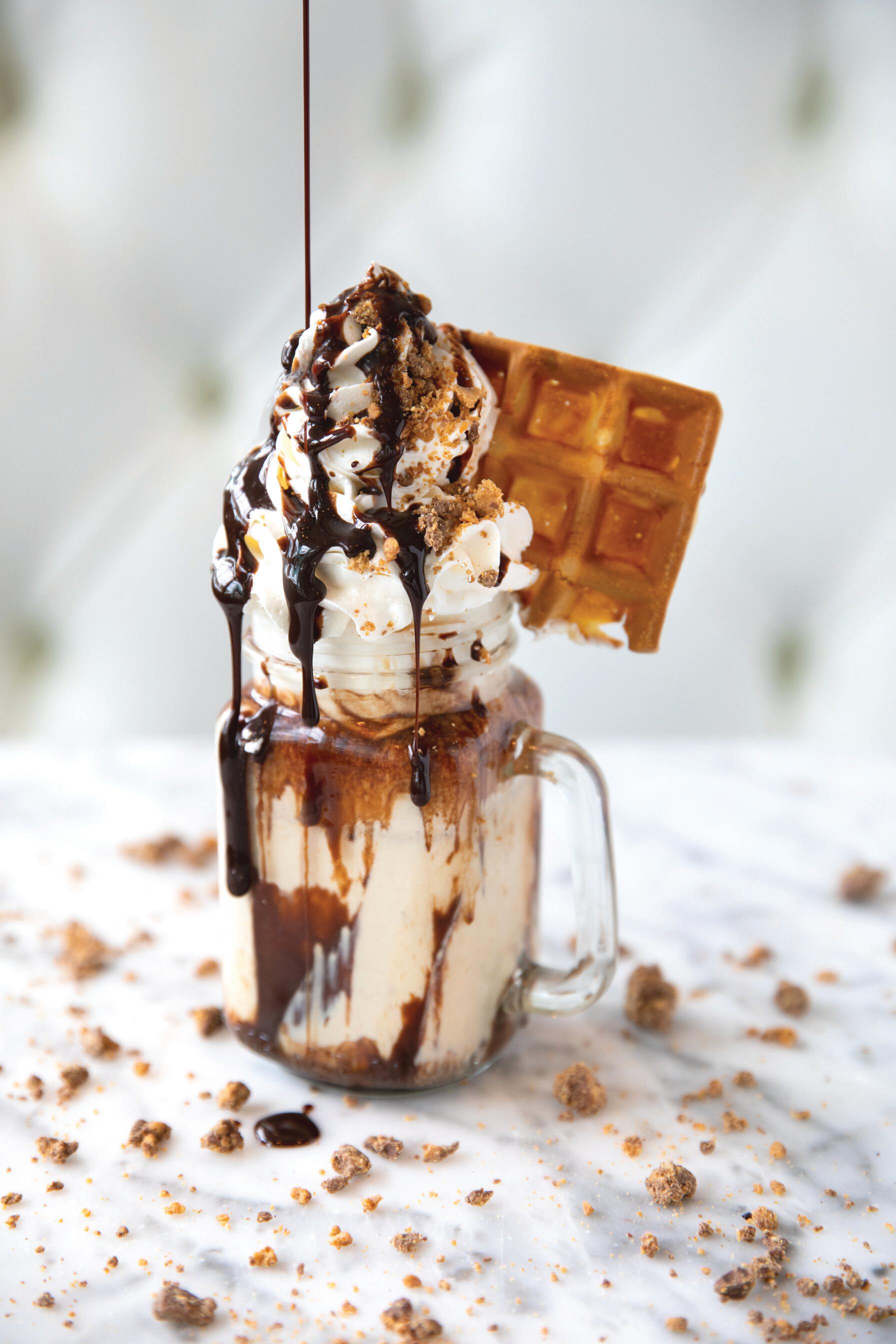












Note: Review Adviser Shelley Stein ('88) is also one of the two French teachers on campus who is organizing this year’s Texas French Symposium.
The annual Texas French Symposium is a urry of Frenchness, with students on vast campuses and noisy suburban school cafeterias reciting French poetry from memory, acting out scenes by French playwrights, submitting artwork and comics and performing music by francophone composers.
This year, the rollicking rendezvous will take place on the Upper School campus.
Rather than traveling to Atascocita or Plano, St. John’s will be hosting the event for the rst time since its inception in 1964.
Nearly 500 students from 25 schools, along with dozens of teachers, judges and volunteers, will arrive on campus after school on Friday, March 31.
French students from both public and private schools across the state will be stationed at tables in Flores Hall for the course of the 36-hour event, which will also utilize 45 classrooms and the VST.
The Chao Assembly room will host the “Baccalauréat,” a quiz bowl-style competition, on Saturday morning, and participants will assemble in the VST for the evening awards ceremony.
Attendees will have a plethora of activities to keep them busy, ranging from a French Film Festival to competitions of chalk art and pétanque, a sport similar to bocce ball. Crafting circles will decorate tropical sea creatures to facilitate the French April Fool’s tradition of poisson d’Avril, in which jokesters plant a paper sh on the backs of unsuspecting bystanders. For the pièce de la résistance, Allison Chavez ('03), the owner of Sweet Paris Crêperie, has o ered to donate hundreds of crêpes.
The theme this year is “Les Caraïbes Francophones” — the French Caribbean islands, which the two Upper School French teachers chose to allow for a focus on diversity in the French-speaking world.
The Francophone Caribbean islands and neighboring French Guyana have been a melting pot of European, African, Indian and Chinese languages and cultures since European explorers, traders and spice merchants entered the territories in the 15th century.

SJS French students have been participating in the contest since 2011, when it seemed like an enriching add-on to the French experience at St. John’s. Students and teachers quickly realized that the excitement of bringing home medals and trophies would make the event an annual tradition.
French Symposium allows participants to meet fellow francophiles. Sophomore Jackie Chapman, who competed in ve categories last year, enjoyed bonding with others as they awaited their turn in front of the judge. After nishing an event, “people from other schools would tell you good luck,” she said.
“People are doing it because they want to speak French,” she added. They are there “because they want to be, not because they're forced to.”
In 2022, the team placed rst overall, with four students nishing in the Top 10 individually.
Junior Adriana Torres Li Ning, who placed third overall in last year’s contest, described competing and winning at a state competition as “validating” and a condence-builder.
But the value of the contest goes beyond the wins, according to French teacher Elizabeth Willcutt. It is also about the long-term engagement with language and culture.
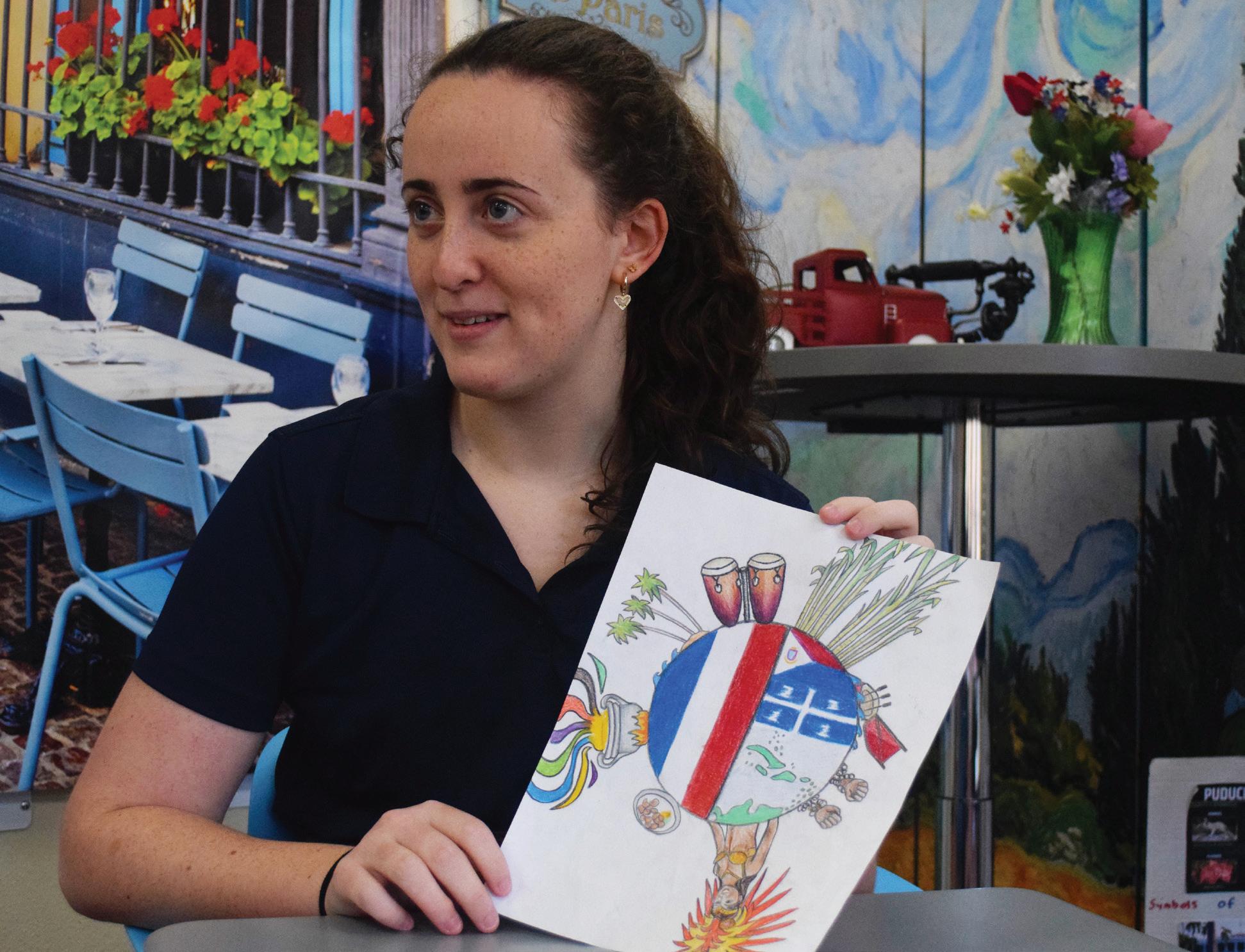
“I see what it's done for students,” she said. “Like how it validates their level of language, their love of the culture. Many of them end up being minors or double majors. They study abroad.”
Willcutt’s passion for the competition was sparked by her own experience as a TFS participant when she was a student at Fort Worth Country Day. She now serves as vice president of cultural events for the Texas French Symposium and plays a central role in the logistics of planning the event.
She joined the Symposium board – comprised of what she describes as a “dedicated group of French teachers” – in order to keep this entirely volunteer-run competition going strong.
In recent years, the event has faced a number of challenges.


In March 2020, a week before the event and as teams were putting their nal touches on performances and artwork, contest organizers were forced to cancel the event as schools went into lockdown.
The contest went virtual in 2021, with students submitting videos of their performances and participating in a restricted number of artistic events. Last year, two competitions were held – an in-person event that attracted fewer than 15 schools in person with another ve schools competing virtually.
Since this year’s projected numbers would most likely not reach pre-pandemic levels of between 850 and 950 participants, this year seemed like the perfect time to host.
“We wanted to make sure that we're doing our part and to make sure that French Symposium continues to happen,” Associate Head of School Chris Curran said. French Symposium president Susan Dworaczyk said she is “thrilled” at the School’s willingness to host and said she is “con dent that we’ll have a fantastic contest on a beautiful and supportive campus.”
This year, the maximum 40 students are competing in the event, but dozens more, including parents, have signed up to volunteer. According to student volunteer coordinator Naina Pai, slots are still available for those who want to participate, and those hours can be counted through the Community Service x2Vol app.
For Curran, part of what makes the process of hosting meaningful is the work that goes into it.
“When a lot of people lean in and create something together, that time spent builds community,” she said.
Miao scored 18 points, the most won by any swimmer at SPC, winning both the 200- and 500-yard freestyle. The boys nished 10 points behind St. Marks and St. Stephens.
“We just need some of the gymnasts to do diving,” Miao said. “We would have won for sure.”





Across town, the wrestling team clinched their seventh-straight SPC title, securing the Trifecta: SPC, Prep State Duals and Prep State Championships, for the fth consecutive year.
During the road trip to Dallas, rst-year swimming and diving coach Jason Wedlick told the team he packed an extra set of clothing because he expected to be pushed into the pool when they won SPC. By the end of the meet, he was doing backstrokes.
The girls’ swimming and diving team won their rst SPC 4A Championship in three years while the boys nished third. But the path to the top of the podium was not easy. Back in April, former coach Ron Raper was diagnosed with cancer and stepped down. Wedlick came in and brought a new coaching philosophy with him.

In previous seasons, club swimmers were not obligated to attend school practices, but Wedlick mandated attending biweekly sessions, which meant most of the team had to swim twice a day.
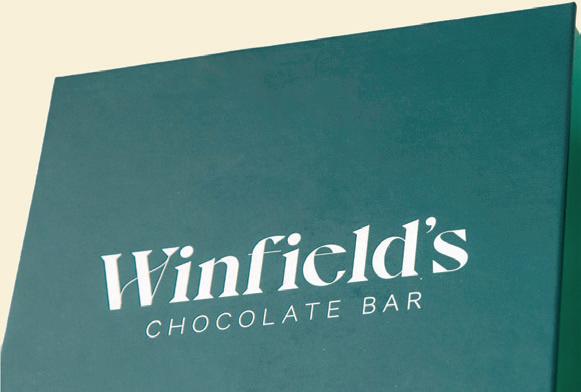
Club swimmers had to wake up at 5:30 for 90-minute morning practices, then go to their after-school club practice for another two hours, according to junior Alex Miao.
Despite dominating South Zone competitions, the teams were not expecting to take home rst place due to having no divers. If the Mavs were going to win, they would have to build up enough points in the swimming events.
Senior Lexie Lukens and junior Lillian Poag scored the most points by a swimmer in the girls' division of SPC on the team, accumulating 12 points each. They were both part of the winning 200-yard medley relay. Relays are worth double the points of individual events.
The girls edged out Duchesne by a mere two points.
“The fact that we won without any divers makes our win that much better,” Lukens said.
This season, coaches promoted hard work and integrity by creating the “Rubber Ducky,” a new tradition started by coach Jeb Ligums, who was inspired by his friend, a Navy Seal nicknamed Rubber Ducky. Wrestlers who embody the team’s values earned a duck.
Throughout the 14 weight classes, 10 Mavs made the nals, with three taking rst place. Sophomores Yahya Mir and Mason Lum and seniors Cinco Grobmyer and Dax Garza quali ed for Nationals.
This year marks the end of another tradition: the Romere brownie. After every meet for the past four years, Taylor Romere, one of senior wrestler Luke Romere’s triplets, baked brownies for the team.

“The last Romere Brownies that will ever be created have been consumed,” an Instagram caption read. “They came and went, joining our journey for a brief time, bringing immeasurable happiness to all those who had the great fortune of receiving one.”

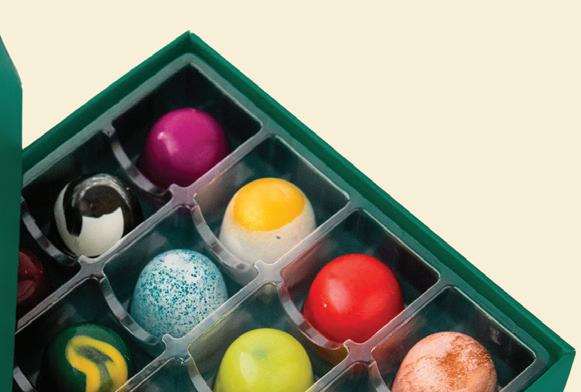

For the past three SPC championships, the girls’ soccer team has lost to Hockaday in the championship — this time the game ended in controversy.
Senior captain Carys Howell scored the rst goal o a corner kick by junior Sarah Shelburne. Hockaday tied the match 1-1 by halftime.
In the second half, sophomore Avery Mirza intercepted a de ection by the Daisy goalie and kicked it in for an apparent goal. One of Hockaday’s defenders leaped into the goal and
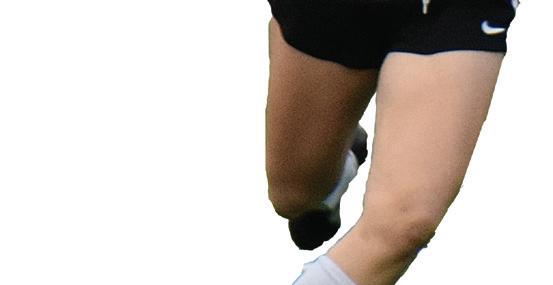

blocked the ball — while it was over the line. Or so it seemed.
“It was a great e ort by their defense,” Doss said, “but I am positive the ball fully crossed the line.”














The center referee disallowed the goal. When Doss questioned the decision, the assistant referee claimed the goal did not count.

Even if the assistant referee did not see it, Doss explained, the center referee had eyes on the ball and had the authority to call the goal — but deferred to the assistant referee.

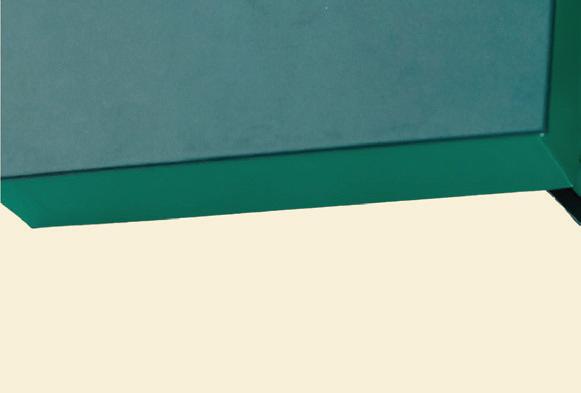
With less than 10 minutes left in the game, the Daisies scored a second goal, giving them a lead they would not relinquish.
“I felt like this was the year out of all the years that I’ve been playing on this team that we had the best chance of winning,” Doss said. “I really felt we could have won that game.”
The boys’ soccer team took sixth place. Earlier in the season, they lost by one goal to eventual SPC Champion Episcopal. They also secured key South Zone wins against St. Andrew’s and St. Stephen’s.
After starting conference play 0-3, the boys’ basketball team rebounded, going on a 5-game winning streak to enter the postseason seeded fourth. In their opening game against Greenhill, sophomore captain Sebastian Williams-Adams scored a career-high 50 points. The Mavs lost a nail-biter to eventual Champion Houston Christian in the semi nals, 67-62.
On the girls' team, junior captain Adley Halligan scored a career-high 32 points against Hockaday in the SPC tournament.
“She was just raining 3's,” senior Grace Rustay said. “It was a thing of beauty.” They nished seventh overall.
For the past 17 years, Coach Paul has built a dominant
 By Richard Liang
By Richard Liang
When a young Sam Elkins (’14) rst met Alan Paul, he thought the new wrestling coach was a little o beat. Paul told Elkins and the rest of the seventh-grade wrestlers that their class would end the four-decade SPC reign of St. Mark’s. While some might have mistaken his con dence for arrogance, others, like Elkins, bought into Paul’s vision.
Since taking over the program in 2006, Paul has become one of the most decorated coaches in school history, winning nine SPC Championships, six State Preparatory Championships and ve Preparatory State Duals Championships.

Paul grew up in a blue-collar suburb of Houston, where going to college seemed like a long shot. He decided baseball was his way out. Even though he was con ned to a yard the “size of a small classroom in the Quad” and a rundown local eld, all he needed was his father’s support. In spite of an exhausting job as a plane mechanic, Paul’s father never skipped afternoon catch with his son.
Paul played baseball and football at Waltrip High School. As one of the most dedicated athletes, he grew frustrated when coaches and teammates gave him sympathy points for his e ort.
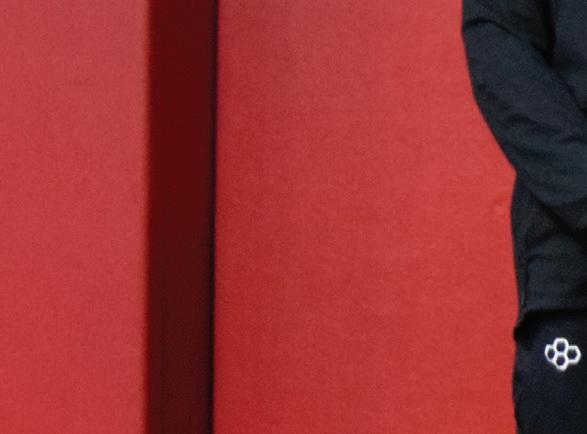
“I don’t want to hear you say, ‘look at how small he is and how hard he tries,’” Paul said.

When he was a sophomore, Paul’s high school became the rst in the greater Houston area to establish a wrestling program. Although he had no intention of joining the team, he happened to be working out in the weight room one day when a wrestling coach came in and told a group of football players that they were now members of the wrestling team.
“We knew nothing about wrestling,” Paul said. “We thought it was WWE, o -the-top-rope stu .”


Without any formal training, Paul destroyed everyone on the mat. His drive to outwork his opponents made up for his lack of experience.
Because wrestlers compete in a designated weight class, Paul had found a sport where he could compete against athletes his size. Despite his newfound talent, he still prioritized baseball, considering wrestling as nothing more than o -season conditioning.
When no college o ered him a baseball scholarship, Paul was devastated, but still wanted to participate in the sporting world. He attended the University of Houston with hopes of becoming a sports broadcaster, working three jobs at one point to pay tuition.
Paul stumbled into coaching by pure coincidence. At the time, he was taking a kinesiology class that involved working with young children — the children loved him for his lively personality. Midway through the semester, his professor pulled him aside and suggested that Paul consider becoming a teacher.
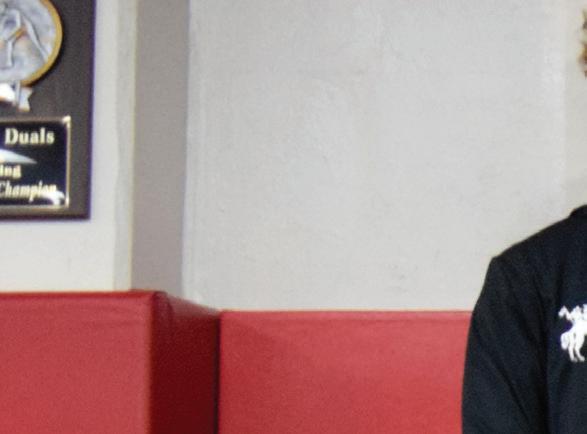
“My advisor began listing potential careers and he said that I could become a coach,” Paul said. “At that moment, a light went o .”
After being referred to Kinkaid’s athletic director, Paul joined the Falcon football sta in 1998. Later, head wrestling coach Steve Liesz, who had competed against Paul in high school, o ered him a part-time position coaching their middle school team. The Falcons went on to win ve consecutive Houston Junior Preparatory Championships.
After graduating from UH, Paul accepted a position as the head middle school wrestling coach at St. Francis. He found instant success with the Wolves, winning three straight HJPC titles.
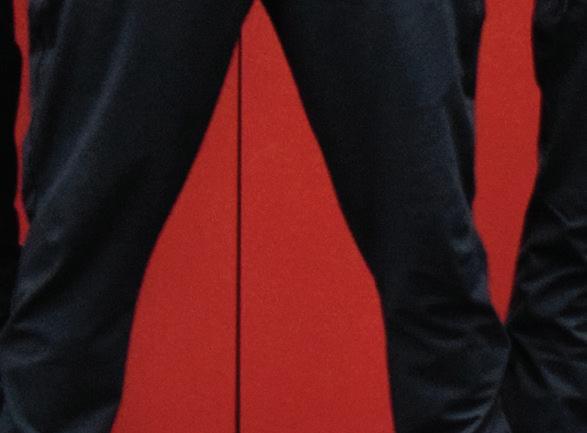
In 2006, St. John’s o ered Paul the head coach position of the wrestling team. While the opportunity to lead a varsity program was attractive, his heart was with St. Francis — and he wanted to avenge a narrow loss to West Briar in the state championships.
was always in the mat room, red up and ready to coach, expecting his athletes to arrive to practice on time and prepared for a grueling workout.





“We dreaded practice, especially the conditioning that came along with it.” Elkins said. “But that pain brought us together and made us the ttest team in all of SPC.”
In 2013, Paul and company nally captured their rst SPC title, edging out St. Marks by six points. He had the message “U can’t win there” engraved on his SPC championship ring. He had nally proved the doubters wrong.
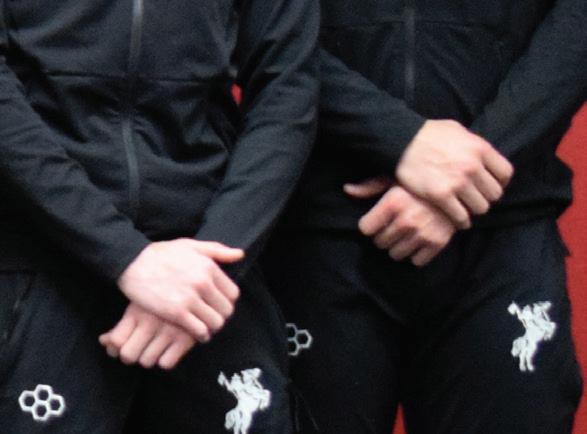

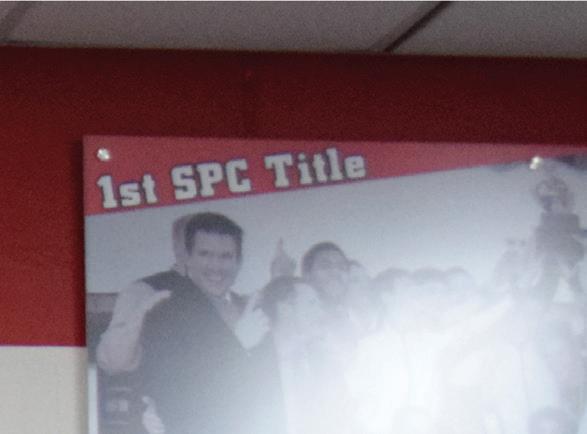
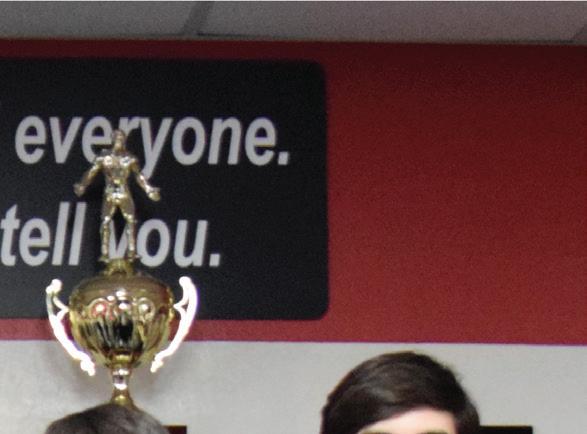
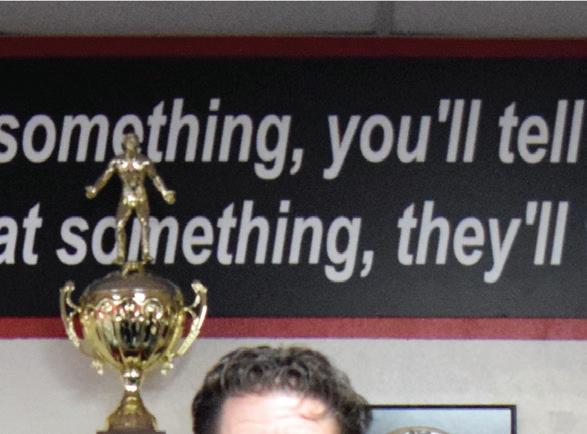

The satisfaction of winning his rst ring lasted mere minutes before he started planning for the next season. Paul had higher aspirations –– setting his sights on state and nationals –– but he knew that if the team wanted to reach the pinnacle of high school wrestling, it would need to add someone more knowledgeable to the coaching sta .
“I knew what I did not know,” Paul said. “I needed to nd someone that knew more about wrestling than I did — and that was Alberto.”
Alberto Hernandez is a 12-time Cuban National Champion and 1996 Olympian, yet Paul initially hesitated to hire him because he feared Hernandez would only prioritize the team’s best wrestlers. After watching him treat young wrestlers the same way as the captains, Paul was convinced that Hernandez was the man for the job. Together, they have coached the Mavs to the last six SPC titles.
In an attempt to retain Paul as coach, parents of the St. Francis wrestling team invited him to a steak dinner. When one of the parents told him that he “couldn’t win there,” Paul took it as a challenge.
“My mind was made up.” Paul said. “I was going to prove them all wrong.”
Paul inherited an unorganized Maverick program that lacked talent and was held in low esteem by the community and their opponents. Most of the wrestlers were noncommittal, frequently arriving to practice late, forgetting to bring their gear to matches and neglecting winter break training. He knew it would be di cult to change the mindset of the varsity squad, so he turned to the Middle School to start the paradigm shift.
Though Paul was not required to attend middle school events, he prioritized being present for the young wrestlers. He showed up to every practice and made an e ort to meet each student.
“He talked about how good the team was going to be in the future and about the championships we were going to win once we were in high school,” Eric Hobby (‘13) said.
“We believed him.”
By the time those wrestlers reached the Upper School, the team dynamic had changed completely due to the rigorous and disciplined culture Paul had cultivated. He
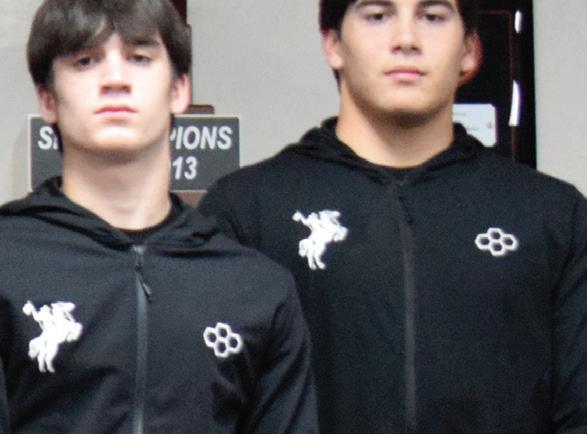
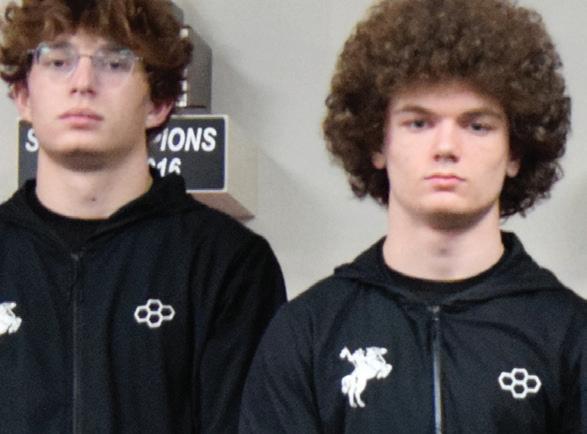
Paul used to rely on word of mouth and a two-week wrestling PE class to recruit students but found his outreach was limited. In 2016, Paul created a weekly wrestling class for lower and middle school students known as Alpha Pups, which introduced the next generation of Maverick wrestlers to the sport at a young age and gave the program a competitive edge.
Under his guidance, the Maverick wrestling program has developed hundreds of talented wrestlers into All-Americans, state champions, college athletes and, most importantly for Paul, better people.
“All the credit goes to the boys,” Paul said. “At the end of the day, I’m just trying to teach them how to be good men.” When Elkins’ father passed away, Paul took him under his wing.
“We went gol ng and he gave me life advice when I needed it,” Elkins said. “He meant the world to me.”
At every wrestling meet, Paul wears a pair of Candyland socks that his own father gave him in 2019. They used to play Candyland and his father would always win by stacking the deck so that Paul would come to hate losing. The socks remain undefeated.

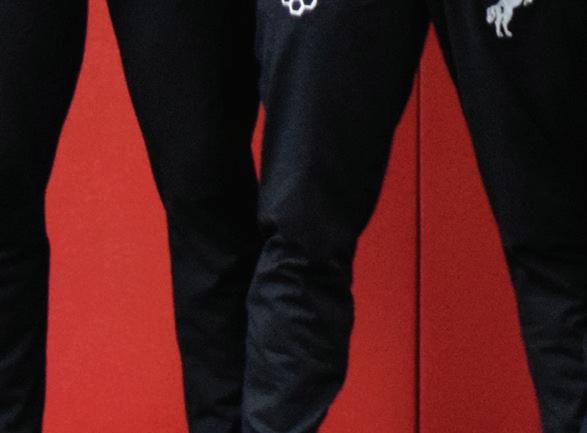
It is hard to nd someone as universally liked as Sarah Shelburne. Her teammates on the girls’ soccer team appreciate that, despite playing in the Elite Clubs National League national selection game last winter, Shelburne is eternally humble.
“Despite her insane talent, she doesn't treat anyone differently,” captain Arianna Doss said.
Shelburne’s modesty extends to her family’s athletic achievements, too: her dad was a competitive tennis player while her twin sisters, Meg and Katie, play eld hockey for Middlebury College and swim for Tufts, respectively.
Yet Sarah chose her own athletic path. She started playing soccer when she was six at the Weekley Family YMCA. When she was eight, she began training with coach Age Covic at Houston Express Soccer Club, now a part of RISE Soccer Club, for four years. He always pushed his team hard but ensured they had fun on the eld, and his talent and passion for soccer inspired Shelburne to play competitively.
“He helped me gure out that I really want to do this,” Shelburne said.
Shelburne currently plays for the Albion Hurricanes in the U17 Elite Clubs National League. During the winter sports season, Shelburne splits her time between the Mavs and the Hurricanes, training with the school team every weekday and sometimes attending additional practices with her club team afterwards. Juggling academics, two soccer teams and the Mavericks robotics team requires more than just athleticism.
“I've learned a lot of time-management skills,” she said. “It's de nitely been more di cult because the schoolwork has been getting harder, and we travel more for soccer every year.”
ERIN WIERZBAMavs head soccer coach Erin Wierzba is well aware of Shelburne’s workload and frequently asks her star player if she needs a break — only to have Shelburne wave her o .
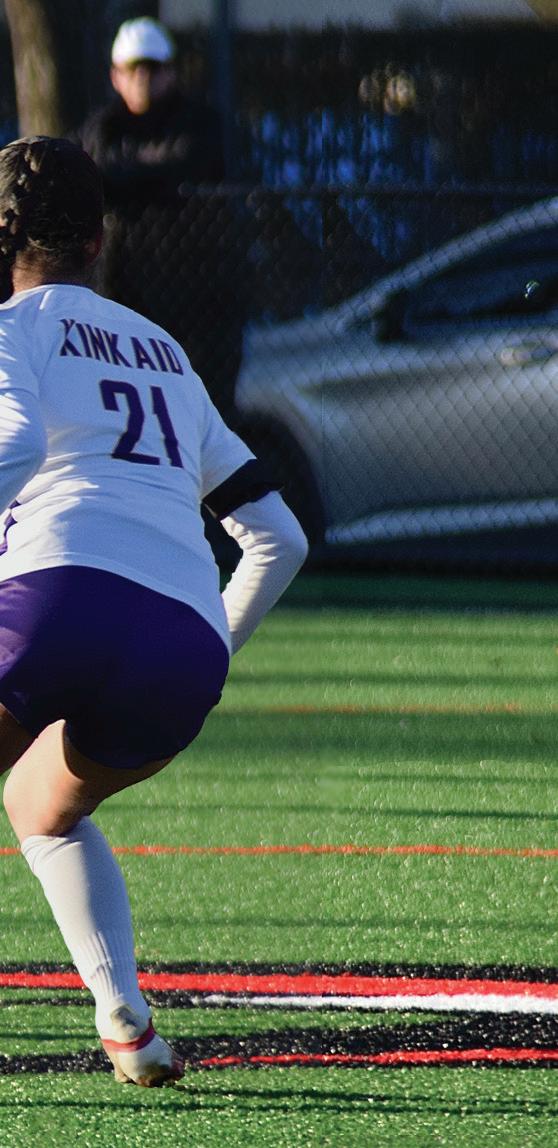
“Never once have I heard her say she’s tired, overworked or overtrained,” Wierzba said.
Shelburne goes on morning runs and works independently on her shooting. While training is often gruel-
ing, she says that her training plan yields results.
“She is the type of athlete that is going to put everything she has into becoming the best version of her soccer self,” Wierzba said.
After losing a game, Shelburne always reviews lm of the game to re ect on how she can improve.
Last season, the Mavs reached the nals of SPC, falling to Hockaday 2-1. After the Mavericks won their rst two games by wide margins, Shelburne did not anticipate the pressure of the nals. They lost after leading 1-0 until Hockaday scored in the last ve minutes.
“I've never been in that situation before, when I've been in a huge game and everything is on the line — I felt super out of my comfort zone,” Shelburne said. “When we're down, I feel like it's my responsibility to bring this game back for St. John's.”
Shelburne has been working on performing under pressure and using her “soccer IQ” to nd moments to shine
in each game. This year, during the Mavs SPC semi nal against Episcopal, she scored one goal and assissted Doss's game-winning shot in extra time. The team lost 2-1 in the championship match against Hockaday.
“Sarah will know if they're doubling her, and that she needs to get rid of the ball quicker,” Wierzba said. “She'll nd our players in order to get herself open.”
Shelburne has been contacted by coaches about playing Division I soccer. She wants to attend a a school with high-level academics and a soccer program that matches her game.
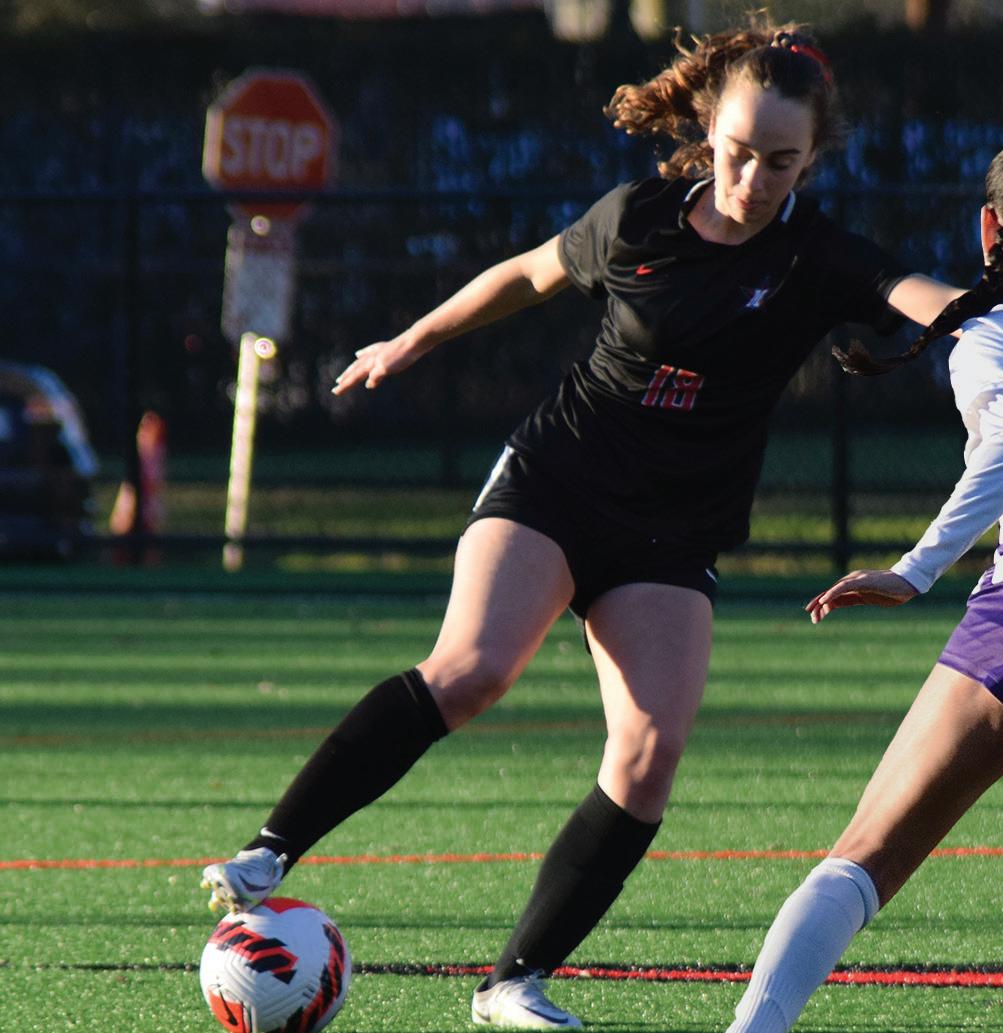
"Wherever she lands they'll be lucky to have her," Wierzba said.
was ranked No. 5 nationally by Global Grassroots. Booker’s father played at Belhaven University and the University of West Florida, which inspired Booker to pursue basketball.
“I want to be just like my dad,” Booker said. “I hope to be a high-level athlete and set a good example for my little brother and little sister just by trying.”
“I got a good feel for the team and Coach Green and all the other coaches,” Booker said. “It was a great experience, and I'm excited to have that now that I'll be playing with them in high school.”
Mavericks head basketball coach Taylor Green describes Booker as a Kevin Durant-type player because of his aggressive o ensive style — Durant happens to be Booker’s all-time favorite basketball player. Green thinks that Booker will be a key contributor to his team in the upcoming years.
“He has a long way to go as far as maturing and learning the plays and what I want as a coach,” Green said. “I coach these kids hard and hold them to a high standard, so that takes a little bit of time to adjust to, but Malachi has a very bright future.”
Back in October, Malachi Booker received an o er to play basketball at Kansas State University — when he was only 13. The 6’5” eighth grader led the middle school team to their rst undefeated HJPC season since Justise Winslow was on the team. After school, he plays as the forward on the Nike ProSkills Swish club team, which
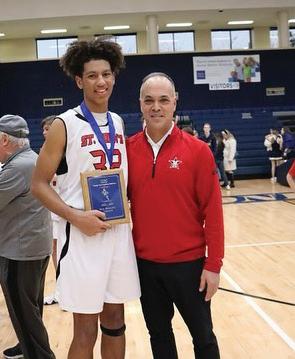
Booker, who has been playing basketball since he was four, competed in age groups older than his own when he was younger, pushing him to improve his game at a faster rate. According to Booker, the team between sixth and seventh grade was when he develped his playing the most. Booker's rapid progress and NBA aspirations caused him to hold himself at a high standard.
“Other people want me to do well, but most of the pressure does come from me,” he said. “I want to do well — to do it for myself, to do it for other people.”
Booker’s club team competes in the Elite Youth Basketball League, a top national circuit for Amateur Athletic Union. With them, he travels to competitions around the country, such as the Sports Academy National Cup, a tournament sponsored by former NBA Championship winner Matt Barnes.
Over the summer, Booker played with members of the Upper School varsity team at the Texas Association of Basketball Coaches Showcase in Duncanville, Dallas County.
Other people want me to do well, but most of the pressure does come from me.
Basketball co-captain Sebastian Williams-Adams eagerly awaits the class of 2027’s arrival to Upper School.
“They have a lot of personality — a lot of ery personality — and they'll bring competition to the team because they want to be on varsity as freshmen,” Williams-Adams said. “As a captain, it’s really reassuring, especially with a talent like Malachi coming in.”
Green is particularly excited to see Booker and Williams-Adams play together next year.
“We should have an older, mature team next year with some very good young talent around it,” Green said. “I’m very excited.”
I want to be just like my dad. I hope to be a high-level athlete and set a good example for my little brother and little sister just by trying.MALACHI BOOKER
She is the type of athlete that is going to put everything she has into becoming the best version of her soccer self.Sarah Shelburne dodges a defender. PHOTO | Isabella Diaz-Mira Malachi Booker and coach Jack Soliman celebrate their undefeated season. COURTESY PHOTO | Malachi Booker MALACHI BOOKER
Some basketball players choose their jersey number based on superstition or their favorite NBA star, but sophomore Sebastian Williams-Adams decided to honor his family.
His grandfather, Carl Williams, was a shooting guard at Wichita State in the 1960s, and his mother, Kareema Williams, was a high school All-American who played power forward for North Carolina and Wichita State. Sebastian’s No. 33 is between his grandfather’s No. 30 and his mother’s No. 34.
is a talented player, and there's not many talented players like that who provide feedback to other people.
In 1992, Kareema averaged 20.9 points per game, becoming the rst Wichita State player to be named Missouri Valley Conference Player of the Year. She still holds the Wichita City League record for most points in a game (41) and most career points (1,762).
In Kansas, “I’m not known as Sebastian — I’m Kareema’s son,” he said.
Sebastian is making a name for himself, too. It all started when his mom took an assistant coaching job at St. Agnes. Six-month-old Sebastian would sit on the bleachers and watch basketball practice. He spent the next seven years polishing his skills as a ball handler, shooter, and defender with the varsity squad.
“Sebastian literally grew up in the gym,” Kareema said. “He'd sit on the bench during games, and I think he assumed he was going to play because he was so into it.”
Although Kareema hoped Sebastian would break the family mold and choose a di erent sport, she jumped at the chance to coach her son when he nevertheless picked basketball. When the frustrations between coach and athlete came home with them, Williams retired as her son’s coach.
SEBASTIAN WILLIAMS-ADAMS PUTS UP BIG NUMBERS
20.6 points per game
7.5 rebounds per game
53.0 2-point field goal percentage
32.9 3-point field goal percentage
1,000+ career points
50 career-high points against Greenhill at SPC


“I just want to be mom and his big supporter,” Kareema said.
As the starting forward for the Nike-sponsored JL3 Elite AAU Team, Sebastian is gaining recognition for his standout play. The team travels across the country from March to July, competing in tournaments such as the Peach Jam, a national competition in South Carolina frequented by college coaches and NBA scouts.
Family is my greatest strength in terms of my motivation to play. It will always be one of the reasons that I play.
In August, ESPN’s National Director of Recruiting for boys’ high school basketball, Paul Biancardi, ranked Sebastian as the No. 20 prospect in the class of 2025. When Portland Trail Blazers forward Justise Winslow ('14) was a senior, Biancardi ranked him at No. 13.
Sebastian’s ultimate goal is to win an NCAA Championship and become an All-American, just like his mother. Mavericks head basketball coach Taylor Green says he has a good chance of playing professionally.
“The sky’s the limit,” Green said. “If he continues to work the way he does and stay humble the way he is, then he's going to be a really good player for a really long time.”
Every morning, Sebastian trains with a strength and conditioning coach. After school, he goes to practice and works with a shooting coach. Upon completing his homework, he watches lm of his games.
“I try to use the clips to see how my teammates like to play and where they're most successful,” Sebastian said. His talent and team- rst attitude earned him the rare distinction of sophomore captaincy. Despite his initial apprehension, he said “it felt amazing to have the team’s trust.”
Sophomore teammate Kiyan Mohammad believes that Sebastian makes a great captain because of his willingness to put the team’s success before his own.
“There are not many talented players who provide feedback to other people,” Mohammad said. “That’s the most important thing you can do as a teammate.”
Earlier this season, Sebastian injured a growth plate in his hip, which kept him o the court for over a month. Still, he showed up to practice every day to support his teammates.
“Watching the team from the outside was helpful because I got to see people's personalities on the court,” Sebastian said. “I was so caught up in the game that I didn't realize where they liked the ball the most.”
This season, Sebastian averaged 20.6 points and 7.5 rebounds per game. In the rst round of the SPC tournament against Greenhill, he scored a career-high 50 points.
“He's very LeBron-esque,” Green said. “The other guys know that he wants to make the right play, so they do all the right things to get to the spot where he can get them a good shot.”
Sebastian attended the Team USA training camp last summer and hopes to make the U16 roster in the spring. Before his high school career ends, he hopes to receive an
invitation to the Nike Hoops Summit, where the best players from the United States compete against top international teams.
Looking ahead, Sebastian aims to become a McDonald’s All-American, an honor awarded to just 24 male players each year. These players compete in a spotlight game. This year’s game will take place March 28 at the Toyota Center. Sebastian hopes to follow in Winslow’s footsteps. After his 2014 McDonald’s All-American nod, Winslow went on to win a national championship with the Duke Blue Devils before being selected 10th overall in the 2015 NBA Draft. “He would be a phenomenal ambassador for the game of basketball,” Kareema said. “Sebastian has a kind heart, and it is so important for NBA players not just to entertain us during the game, but to give back to the community.”
Like his mother, Sebastian has already received o ers from many competitive Division I programs, including the second-ranked Houston Cougars and the fth-ranked Texas Longhorns. He will announce his decision in November of his senior year. Sebastian’s coaches and mentors, including Houston Rockets assistant coach and former NBA All-Rookie John Lucas II, have advised him to enjoy the recruiting process.
“I'm very indecisive, so committing to college will probably be the hardest thing I'll ever have to do,” Sebastian said. “They just keep telling me to take my time and enjoy where I'm at because four years go by in a ash.”
He would be a phenomenal ambassador for the game of basketball. Sebastian has a kind heart, and it is so important for NBA players to not just entertain us during the game, but to give back to the community.
Despite all the anticipation, Sebastian hopes that his collegiate career is brief given that most of the top NBA players are “one-and-done,” declaring themselves eligible for the NBA draft after just one season.
On Feb. 3, Sebastian scored his 1,000th career point in a win against Kinkaid on Owsley Court. Sebastian’s mother and father were in attendance with balloons and cookies for the team. The scene mirrored when Kareema reached her own milestone — her father and mother were also in the stands celebrating when she scored her 1,000th career point.
“If things weren't going right, I would always look to my father,” Kareema said. “Fast forward to Sebastian and I at games: if things aren’t going well or if something happens, he'll look over at me.”
Sebastian’s grandfather passed away in 2016. Even though Sebastian never got to see his grandfather play, he realized while looking through old photos that his shooting form was identical to his grandfather’s — and his mother’s. “Family is my greatest strength in terms of my motivation to play,” Sebastian said. “It will always be one of the reasons I play.”
Sebastian Williams-Adams makes a game-tying layup against the St. Stephen's Spartans. PHOTO | Diane Guo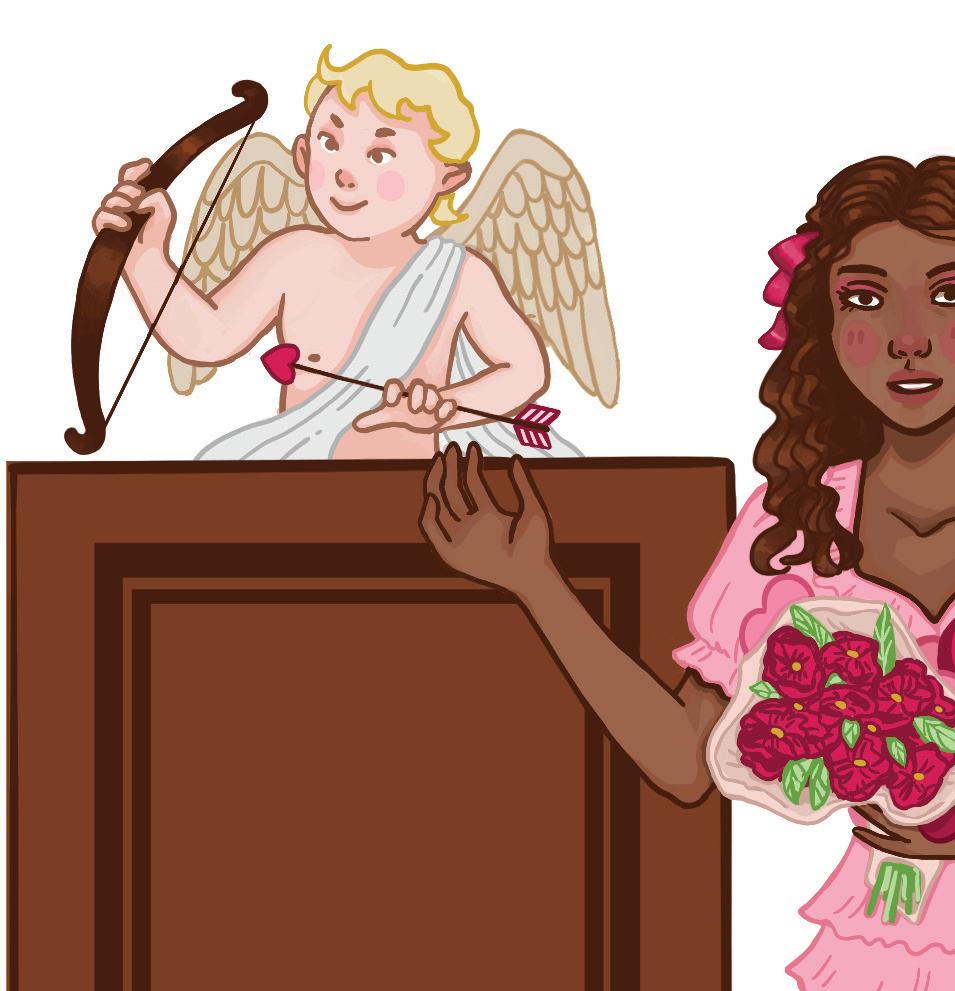 By Lydia Gafford
By Lydia Gafford
Valentine’s Day gets a bad rap.
I’ll spend February 14 the same way I spent it last year: lling up a heart-themed basket with every kind of candy in the Kroger Valentine aisle and handing it out to friends and classmates alike — sort of reverse trick-or-treating.
Last year, with hearts on my barrettes, hanging from my ears, and even printed on my socks, I was handing out Valentines when I heard, from around the corner, “something, something… I hate Valentine's Day.” My heart dropped.


Hate Valentine's Day? How and why could anyone ever hate Valentine's Day?
There is so much to love about Valentine's Day. There is a clear aesthetic and dress code. Valentine’s Day festiveness is cute in an innocent, endearing manner.
Valentine’s is the rare combination of gift-giving and candy collecting. Trick-or-treating is wonderful on Halloween, but on Valentine's Day the candy comes to you. Friends exchange owers, cards and trinkets. Many of my most treasured items on the shelf in my room were Valentine's Day gifts. When we are lucky enough to have the 14th fall on a school day, clubs give out even more candy.
Last year I scored three bags’ worth of loot.
The joy from preparing my Valentine's Day gifts is unlike any other excitement. I might spend a whole day in a goodie-bag assembly line, lling up 20 heart-themed tissue paper bags.
I know the holiday is heteronormative, that it puts too much emphasis on romantic relationships and taunts singles. But I’ve spent many a Valentine's Day as an unattached queer person, and it’s never ruined the holiday for me. I celebrate all sorts of love on Valentine’s Day, and nothing stops my friends and me from exchanging gifts or my mother from preparing gourmet heart-shaped ravioli for dinner.
For those who feel like they cannot celebrate Valentine's Day on account of being single, I have but one question: Why not? Nobody can stop you from watching “When Harry Met Sally.” None of your friends would complain if you brought them heart-shaped lollipops or sweet notes.
Critics also complain that Valentine’s Day is an over-commercialized holiday. According to the National Retail Federation, in 2023 Americans expect to spend almost $26 billion to celebrate — an average of $78 per person. But Valentine’s Day is not the only o ender. Mother’s Day, Father’s Day and Christmas have been forgiven for the sin of consumerism on account of what they celebrate, so why not Valentine’s?
Valentine’s Day is an easy target because, as a culture, we love nothing more than to roll our eyes. YouTubers build platforms on complaining that various forms of me-
dia are dumb and worthy of ridicule: commentary videos are the fourth most watched genre on Youtube. It’s so terribly easy to be cynical, and it’s so terribly entertaining. There is merit to critically analyzing pop culture, but why must we constantly try to gatekeep what is and isn’t worthy of being celebrated? The tiny wonders that just make life a little better — a rose, maybe, or a Hershey’s Kiss — are worthy of being celebrated.
It is so much more admirable to show people love, no matter how silly or childish it seems, than to tear down unserious things. For those unwilling to appreciate the holiday, maybe it’s not Valentine’s Day — it’s you. You might be afraid you will be disappointed if you allow yourself to get excited. Or maybe you’re afraid you will feel silly.
It takes courage to fall in love with something, so this year, I dare you to fall in love with Valentine’s Day.
By Cameron EderleIthink the concept of “coming out” is no longer essential to one’s acceptance.
The celebratory aspect of revealing one’s sexuality came about as a defense mechanism to honor an otherwise controversial act — while revolutionary at the time, it has run its course.
Homophobia may still be rampant in some communities, but in my generation, the insinuation that your sexuality is a huge surprise to others is somewhat nonsensical. It's not going to be the mind-blowing reveal that you think it is, nor will you receive the backlash you may expect.
Coming out makes a big deal about something that should only be one part of someone’s whole identity. It moves you from one box to another, reinforcing the idea that you have to assign yourself a new label or else your sexuality isn’t justi ed or defendable.

At least that’s how it felt for me. The rst few years of high school, it was a struggle to get over the shame of not being heterosexual, but an even bigger struggle to de ne exactly what my feelings were.
Since middle school, I’d wanted to write a story. Last year, I nally decided to take on novel writing as an Independent Study Project, mostly as a mechanism to hold myself accountable and actually get it done.

While planning my novel, “Tra c at the Ivy” (now available on Amazon.com and Barnesandnoble.com), the central romance was originally between Chase, the resident recluse of his Manhattan prep school, and a girl. But as I began eshing out the story, it became obvious that Chase had way more romantic chemistry with Theo, his childhood best friend.
The greatest part about it was that the book was not a romance novel at all; it follows the rising tensions between two magical secret societies in New York City. Chase and Theo’s budding sexualities were only a small part of the whole — as it should be.
My philosophy on sexuality was manifested through my two main characters. This realization must have transmitted some sort of signal because suddenly, friends both old and new began con ding in me their stance on their sexualities. Nothing made me happier than being the person to tell them that their feelings were normal, that they should dive in and explore the waters of their complex identities.
I was simultaneously honored that my philosophy could help others and comforted that I wasn’t the only one who didn’t have an exact answer.
Perhaps I’ll have a clearer answer one day, but even if I don’t have all the answers yet, it doesn’t devalue me as a person.
I understand that for many, labels o er solace — and a community. Most of all, labels provide solid ground to stand on: with a label, you have an answer to the question, “If you’re not straight, then what are you?”
But for me and many others, labels — and by extension, coming out — feel inauthentic. I don’t need to call myself gay or straight to be who I truly am. It’s important to normalize the fact that sexuality is uid.
It’s not even a spectrum — that’s too linear. Sexuality is a loop-the-loop, it's an elastic string, it’s a river full of tributaries and dams and little springs. It’s a natural force that doesn’t conform to boundaries.
While coming out provided a safety net for past generations, it has now become yet another restriction on one’s freedom to explore their identity.
On 'coming out:' moving from one box to anotherILLUSTRATION | Jackie Thomas
St. John's School 2401 Claremont Lane
Houston, TX 77019
review.sjs@gmail.com
sjsreview.com
Facebook SJS Review
Twitter @SJS_Review
Instagram @sjsreview
Member National Scholastic Press Assn.


Pacemaker 2015, 2018 Pacemaker Finalist 2019–2021
Best of Show Fall 2022, Spring 2021, Fall 2021
Member Columbia Scholastic Press Assn. Gold Crown 2015, 2020–2022 Silver Crown 2014, 2016–2019


Writing Excellence 2022
First Place Editorial Leadership (PSJA) 2022
SNO Distinguished Site 2018–2022
Print Editors-in-Chief

Wilson Bailey, Cameron Ederle, Diane Guo, Annie Jones, Alice Xu

Online Editors-in-Chief
Ella Piper Cla y and Dawson Chang
Section Editors
Abigail Hindman & Lillian Poag (News), Mia Hong (Mavericks), Lydia Ga ord (Culture), Richard Liang (Sports), Lauren Baker (Opinions)
Sub Editors Lily Feather and Serina Yan
Copy Editor Ellison Albright
Design Editors
Georgia Andrews and Amanda Brantley
Photography and Multimedia Editors
Lexi Guo & Isabella Diaz-Mira and James Li
Online Section Editors
Emma Chang, Aleena Gilani, Elizabeth Hu, Lucy Walker
Online Site Manager Arjun Maitra
Production Manager
Sophia Jazaeri
Sta

So a Aboul-Enein, Elise Anderson, Emma Arnold, Natalie Boquist, Finn Brewer, Kenzie Chu, Virginia Carolyn Crawford, Katie Czelusta, Eshna Das, Kaviya Dhir, Landon Doughty, Pierce Downey, Aien Du, Turner Edwards, Maddie Garrou, Nick Hensel, Aila Jiang, Kate Johnson, Julian Juang, Josie Kelly, Shayan Khan, Nathan Kim, Kenna Lee, Johnathon Li, Jennifer Lin, Jennifer Liu, Abby Manuel, Wade McGee, Lee Monistere, Parker Moore, Isabella Munoz, Ethan Nguyen, Riya Nimmagadda, Marin Pollock, Gabriel Pope, Dalia Sandberg, Jackie Thomas, Mark Vann, Justin Wright, Katharine Yao and Willow Zerr
Advisers
David Nathan, Shelley Stein ('88), Sam Abramson
Mission Statement
The Review strives to report on issues with integrity, recognize the assiduous e orts of all and serve as an engine of discourse within the St. John's community.
Publication Info
We mail each issue of The Review, free of charge, to every Upper School household, with an additional 1,000 copies distributed on campus to our 697 students and 98 faculty.
Policies
The Review provides a forum for student writing and opinion. The opinions and sta editorials contained herein do not necessarily re ect the opinions of the Head of School or the Board of Trustees of St. John's School. Sta editorials represent the opinion of the entire Editorial Board unless otherwise noted. Writers and photographers are credited with a byline. Corrections, when necessary, can be found on the editorial pages. Running an advertisement does not imply endorsement by the school.
Submission Guidelines
Letters to the editor and guest columns are encouraged but are subject to editing for clarity, space, accuracy and taste. On occasion, we publish letters anonymously. We reserve the right not to print letters. Letters and guest columns can be emailed to review.sjs@gmail.com.





but conventional, but sometimes we forget to celebrate the loves and passions of others. For every story we report on this issue, there are hundreds of stories worthy of coverage.
Let the Hallmark cards, candy and pink out ts remind us that love does not have one de nition — and should not be con ned to a single overly commercial holiday. Love makes St. John’s what it is.
With love, Wilson Bailey
Alove for one’s school is more than mechanically reciting the alma mater or a wellplaced bumper sticker on your SUV. It’s a love for contribution — a love for sharing our passions that transcends our highs and lows.
St. John’s is busy and complex — an impressive collection of individuals that comprise one of the most prestigious prep schools in the country. Amid our packed schedules and un nished to-do lists, it is easy to lose sight of the bigger picture, which is built on small, often underappreciated contributions.
What we do best is grounded in love, and we celebrate these accomplishments in this issue. It’s February 14th, so naturally, we examine traditional ideas of love — relationships, Valentine’s Day, de ning oneself — but we also recognize that love is not con ned to these ideas alone. (See pages 10-11 and 18).
Consider Fine Arts Director Bill McDonald, who has fostered the artistic growth of thousands of thespians over the years. Following a medical scare in 2020, he needed the community for support. More recently, he needed them to save his life (Page 3).
Our resident rim-rattlers, sophomore Sebastian Williams-Adams and eighth-grader Malachi Booker, show us that honoring community and family are as vital to success as extra time in the gym (Pages 16-17). The Editorial Board speaks for everyone when we say we are excited to watch both of them team up next year. There is no better example of passion and love of community than wrestling coach Alan Paul (Page 15). His commitment has produced a dynasty so dominant that we barely batted an eye when the wrestlers added another trophy to their case last weekend — the ninth SPC title in 10 years, by the way. Our school community is anything

